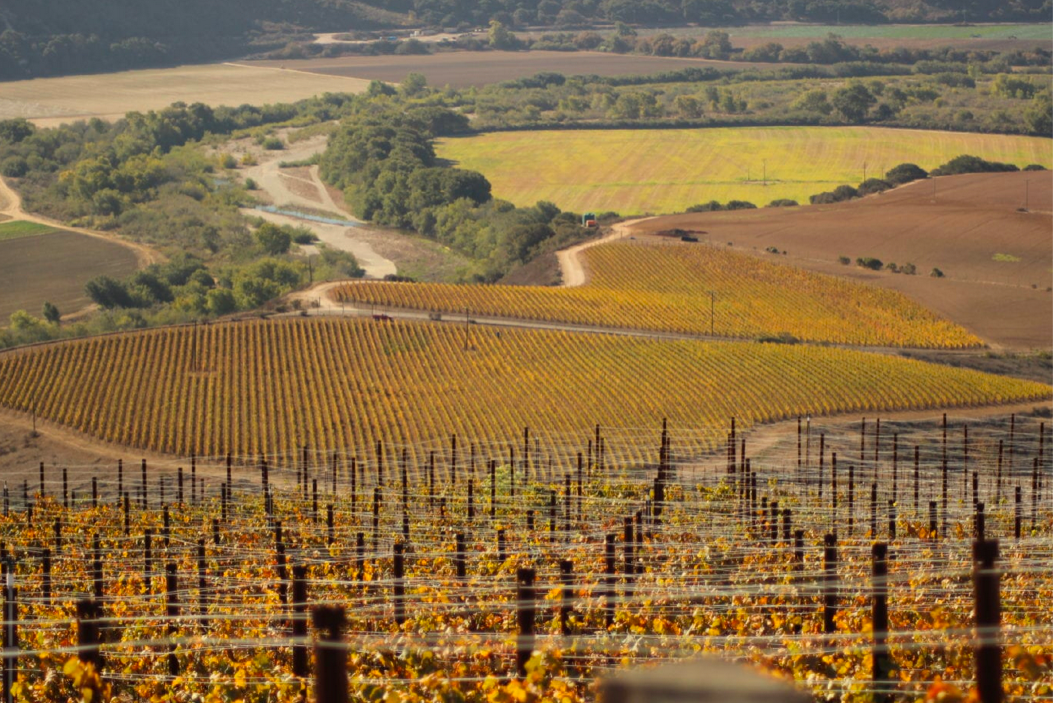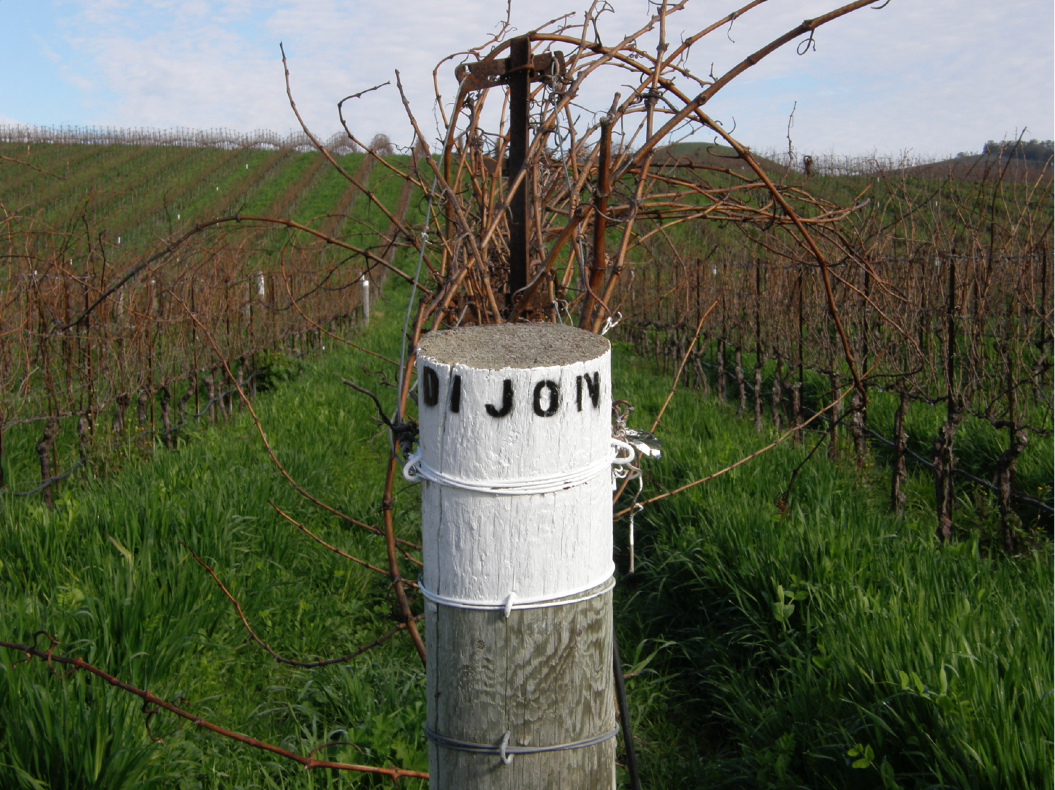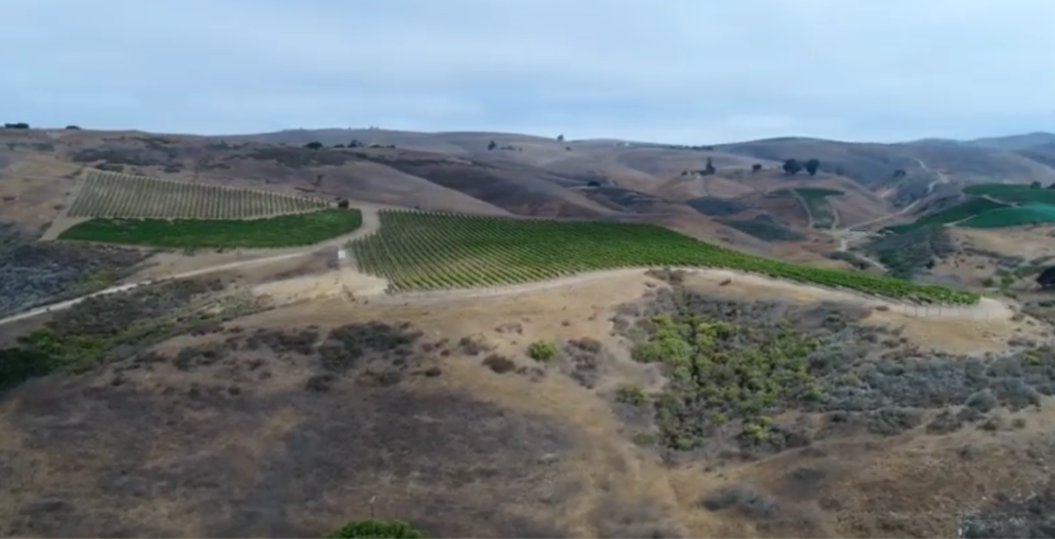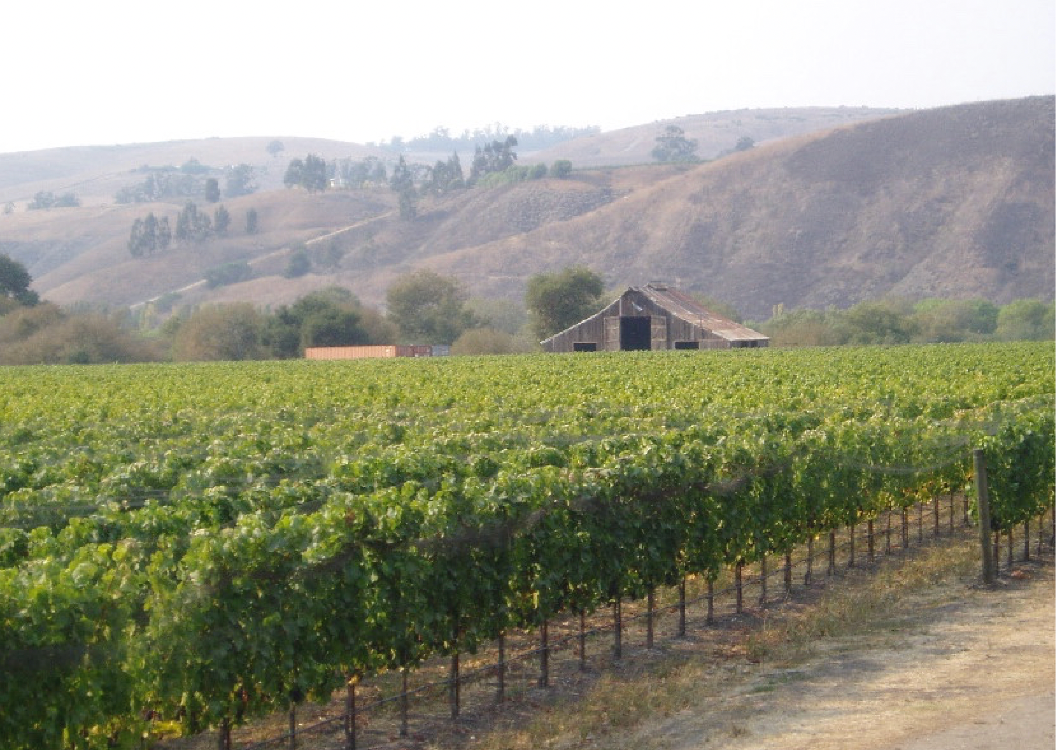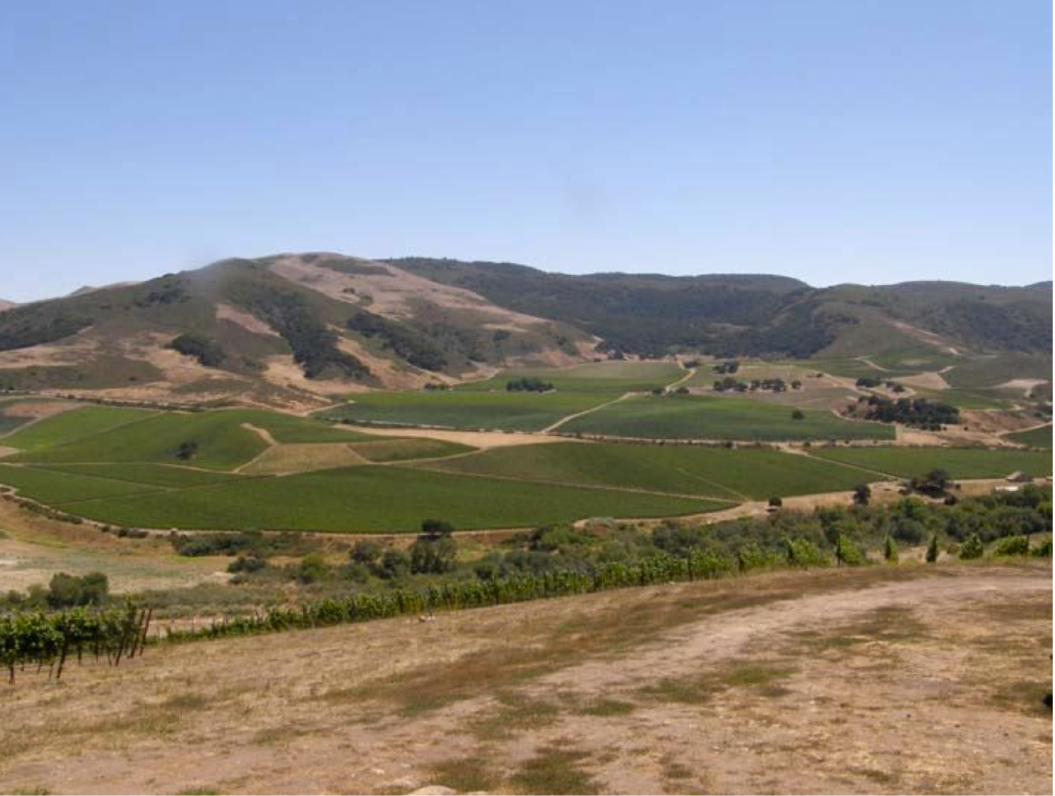PinotFile: 12.22 September 18, 2021
|
Elite California Pinot Noir Vineyards Part III
This issue is Part III or the third of a three-part article devoted to what I consider Elite California Pinot Noir Vineyards. As domestic Pinot Noir has enjoyed a surge in popularity over the past three decades and the consumer has become more knowledgeable about Pinot Noir, there has been an increasing emphasis on vineyard sources. Unlike Burgundy, where vineyards receive top billing on wine labels, in California the producer receives preeminence on wine labels. My listing of California Pinot Noir vineyards considered “Elite" is based on twenty years of my reviews from every notable Pinot Noir vineyard in California. I have provided detailed information on each Elite California Pinot Noir vineyard. This compilation is meant to serve as a valuable resource for Pinot Noir enthusiasts as well as a reliable guide for Pinot Noir purchases. I have chosen the word Elite to signify the finest or the best of their kind. I leave the Grand Cru designation to the French because their classification is based on primarily geological and climatic conditions while my classification is based on the quality of wines consistently originating in a special vineyard.
Outline of Elite California Pinot Noir Vineyards: Part III - Central Coast
Santa Cruz Mountains
Lester Family Vineyard Mount Eden Estate Vineyard Rhys Alpine Vineyard Rhys Horseshoe Vineyard Windy Oaks Estate Schultze Family Vineyard
Santa Lucia Highlands Garys’ Vineyard Morgan Double L Vineyard Pisoni Estate Vineyard Tondré Grapefield
Sta. Rita Hills
Domaine De La Côte Clos Pepe Vineyard Fe Ciega Vineyard Fiddlestix Vineyard Sanford & Benedict Vineyard Sea Smoke Vineyard
Other Central Coast appellations
Bien Nacido Vineyard, Santa Maria Valley Calera Jensen Vineyard, Mt. Harlan Hoffman Mountain Ranch Vineyard, Adelaida Hills Rosemary’s Vineyard, Arroyo Grande Solomon Hills Vineyard, Santa Maria Valley If you stock your wine cellar with Pinot Noirs from these vineyards made by the featured producers, I guarantee you would have a wine cellar to not only brag about but one that will bring you years of marvelous drinking pleasure.
Elite California Pinot Noir Vineyards Part III: Central Coast - Santa Cruz Mountains
Jamie Goode
Lester Family Vineyard
Owners: Dan and Pat Lester
2013 Waxwing Lester Family Vineyard Santa Cruz Mountains Pinot Noir 13.5% alc., 123 cases, $39. 50% whole cluster fermented, aged 11 months on once-used French oak barrels. · Moderate garnet color in the glass. Nice perfumed scents of cherry, baking spices, sandalwood barrel cave, and worn leather. The core of cherry and dark red berry fruits are accented with some cardamom spice and a shadow of oak. A good arrow of acidity and moderate tannins lead to a moderately long, dry but juicy finish. Drink up within 5 years. (reviewed in 2015 with a score of 94) Score: 92
2014 Big Basin Lester Family Vineyard Santa Lucia Highlands Pinot Noir 13.0% alc., 325 cases, $48. Clones 115, 667 and Mt. Eden. 100% whole cluster fermented. · Moderately light garnet color in the glass. Whole cluster-inspired aromas of dark red cherry, herbal tea and sweet pipe smoke. Nicely composed, with good harmony and a sleek, polished mouthfeel. Tannins are in check. A slight herbaceous tone reflects the whole cluster input. ( I was enamored with this wine when review in 2017 and gave it a score of 97) Score: 93
2016 Big Basin Lester Family Vineyard Santa Lucia Highlands Pinot Noir 13.3% alc., 414 cases, $55. Clone 667 and a Swan selection. Aged 18 months in French oak barrels, 25% new. Bottled unfined and unfiltered. 100% whole cluster fermented. · Moderately light garnet color in the glass. Whole cluster driven aromas of burnt tobacco, spice and purple fruits. Simply a great whole cluster fermented wine with purple berry and purple plum fruits that make a big impact on the palate and finish. Slightly smoky, with a grilled meat note. Noticeable, but not intrusive tannins and a delightful, sweet cherry finish. Still a youngster and surely a 15-year wine. (Reviewed in 2018 with the same score) Score: 94
2017 Waxwing Lester Family Vineyard Santa Cruz Mountains Pinot Noir 14.1% alc., 115 cases, $48. 100% de-stemmed, aged 10 months in once-used French oak barrels and bottled with light filtration. · Moderately dark garnet color in the glass. Vibrant aromas of Bing cherry and allspice. Mid-weight plus in style, with a wellripened array of fruits including purple grape, boysenberry and blackberry flavors with a hint of savory herbs in the background. No hard edges, with modest tannins and a lengthy, crisp, and quenching finish. Score: 93
2018 Lester Domingo Lester Family Vineyards Santa Cruz Mountains Pinot Noir 14.2% alc., 260 cases, $55. Clones 667, 115, Mt. Eden, Wädenswil 2A, and Swan. Harvest Brix 23.8º. Native yeast fermentation. Aged 16 months in French oak barrels, 40% new. · Light garnet color in the glass. Wonderful nose with effusive aromas of cherry, blueberry, spice, and pipe smoke. Light to mid-weight in heft, with a delicious core of wellspiced cherry goodness. Forward drinking with svelte tannins, a lacy texture and a welcome hint of oak. This wine has the delicate power that is so desirable in a great Pinot Noir. Score: 94
2018 Lester Mercurio Lester Family Vineyards Santa Cruz Mountains Pinot Noir 13.5% alc., 267 cases, $55. Clones 667, 115, Pommard, Mt. Eden, Wädenswil 2A, and Swan. Harvest Brix 23.2º-24.2º. 95% destemmed, native yeast and inoculated yeast fermentations. Aged 10 months on the lees in French oak barrels, 30% new. Bottled unfined and unfiltered. · Moderately light garnet color in the glass. Deep cherry aroma with added scents of earthy flora, and floral bouquet. Dark cherry and purple grape fruits are assembled in a very approachable style with excellent balance. This offering has more earthiness and savory oak than the Domingo bottling but is nearly equal in desirability. The extended finish is particularly noteworthy. Score: 93
2018 Waxwing Lester Family Vineyard Santa Cruz Mountains Pinot Noir 14.4% alc., 133 cases, $42. Seventh vintage of this wine. Clones 115, 667 and Mt. Eden.100% de-stemmed, 5-day cold soak, and aged in once-used French oak barrels for 10 months. Bottled with light filtration. · Moderately light garnet color in the glass. Terrific nose infused with aromas of cherry, strawberry, red rose bud, sandalwood, and savory herbs. Light to mid-weight stylistically, with a blast of cherry and strawberry fruit that attacks the palate on entry and is expansive through the mid-palate. Very appealing elegance with gentle tannins, a hint of complimentary oak, and a long, juicy, lifted finish. Impressive harmony. Still exceptional when tasted the following day from a previously opened bottle. A very special value. Score: 94
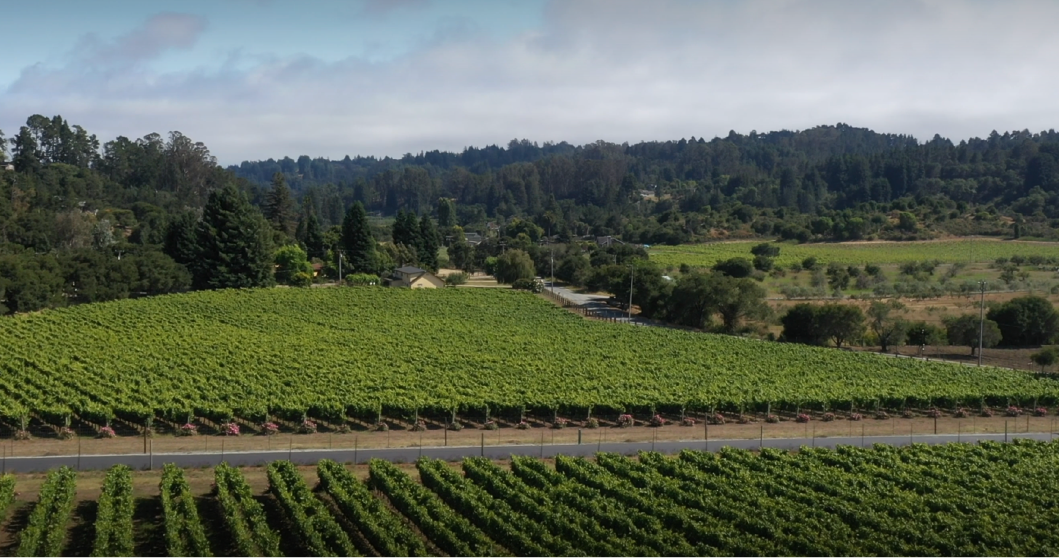 More reviews: www.princeofpinot.com/vineyard/831/
Mount Eden Estate Vineyard
Owners: Jeffrey Patterson (the winemaker since 1981) and spouse Ellie acquired majority ownership in 2008.
2014 Mount Eden Vineyards Estate Santa Cruz Mountains Pinot Noir 13.0% alc., 800 cases, $65. · Dark garnet color in the glass. Plenty of new-sawn oak on the nose along with aromas of boysenberry and root beer. A mid-weight plus styled wine with a plethora of well-ripened purple and black berry fruits with a hint of raisin and savory, toasted herbs. A gutsy wine but refined, with a welcoming suave texture and commendable balance. Unchanged when tasted the following day from a previously opened bottle. Score: 93
2017 Mount Eden Vineyards Estate Santa Cruz Mountains Pinot Noir 14.9% alc., 208 cases, $65. Made with organic grapes. · Moderately dark garnet color in the glass. Reserved aromas of blackberry jam on a toasted muffin. Full-bodied and very ripe-fruited, offering well-oaked fruit flavors of blackberry and cassis. A huge, dense Cabernet lovers Pinot Noir. A slight sense of alcohol shows up on the finish as the wine warms in the glass. Unchanged when sampled the following day from a previously opened bottle. Score: 90
2017 Mount Eden Vineyards The Tanaka Project Santa Cruz Mountains Pinot Noir 13.5% alc., 75 cases, $80. · Moderately dark garnet color in the glass. An extraordinary wine in all respects. Soaring aromas of the blackest fruits, anise, and oak-driven spice and mocha. Glorious purple grape and purple plum flavors exhibit a striking entry, mid-palate and finish. Very modest tannins, with exquisite harmony. An extremely long finish just doesn't want to give up. Terrific the next day and 3 days later from a previously opened bottle still showing an amazingly long finish and impeccable balance. Score: 97
 More reviews: www.princeofpinot.com/vineyard/654/
Rhys Alpine Vineyard
Owner: Kevin Harvey
2006 Rhys Alpine Vineyard Santa Cruz Mountains Pinot Noir 14.0% alc., magnum. · Moderately dark garnet color in the glass. The aromas reach a pinnacle over a hour in the glass, revealing a nose replete with dark berries, dark rose petal and a hint of oak. Very lovely blackberry, boysenberry and black raspberry fruit flavors backed by noticeable but refined tannins. Fruit-laden and reflective of the exuberance of young vines. The finishing length deserves special mention. In this magnum format, the wine surely will provide pleasure for several more years. Score: 94
2012 Rhys Alpine Vineyard Santa Cruz Mountains Pinot Noir 12.9% alc., magnum. · Dark garnet color in the glass. Intriguing aromas of black cherry, baking spices, tobacco, rose petal and Chanel #5. Over time, my enthusiasm for the nose reached a seductive stage and my notes say, “Great.!” Packed with chewy black fruits but very polished and silky in texture. Nothing out of place with complete integration of tannins. The generously- fruited finish easily last 30 seconds. This PrimaDonna is easily a 20-year wine. Score: 97
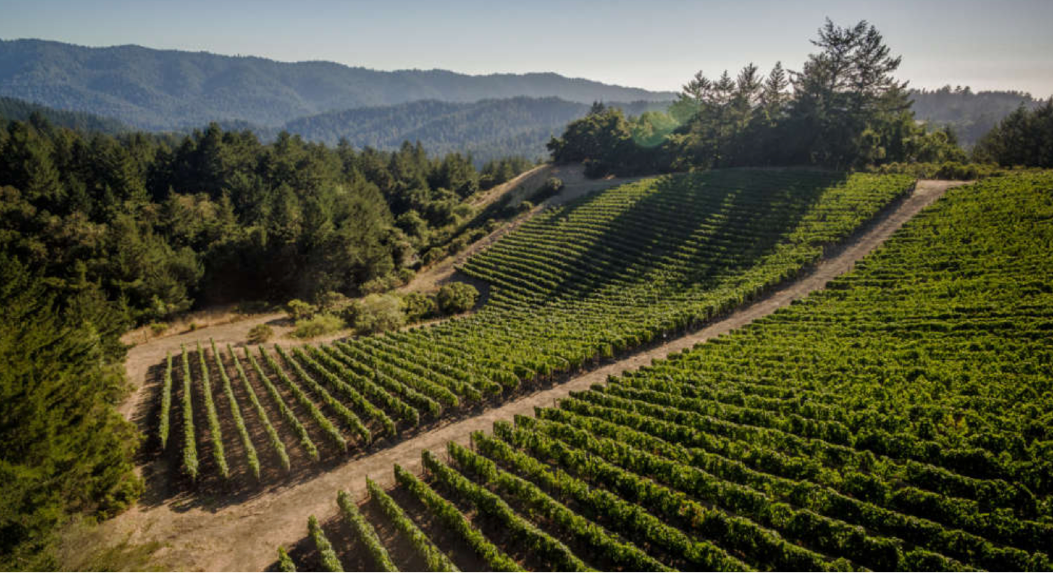 More reviews: www.princeofpinot.com/vineyard/503/
Rhys Horseshoe Vineyard
Owner: Kevin Harvey
2014 Rhys Horseshoe Vineyard Santa Cruz Mountains Pinot Noir 12.7% alc. Rhys selection and two heritage clones. · Moderately dark garnet color in the glass. The nose is both fresh and uplifting and both fruity and savory with scents of purple berry, earthy flora and iron. Discreetly concentrated in a middleweight style with flavors of black raspberry and blueberry-pomegranate framed by a moderately firm tannic backbone. There is a distinct savory, earthy tone. Beautifully crafted, with a bright mouthfeel and some finishing length. Even more enjoyable when tasted the following day from a previously opened bottle. Score: 93
2018 Rhys Horseshoe Vineyard Santa Cruz Mountains Pinot Noir 13.3% alc., $. · Moderately dark garnet color in the glass. Intriguing aromas of black raspberry, blackberry, fresh-turned soil, and a hint of dark caramel. The purple grape, black raspberry and blackberry fruits have a striking presence in a middleweight style. The earthy underbelly adds a terroir note and it seems as if one can taste the soil where the vine grew. Silken in texture, with modest and balanced tannins and impressive ending fortitude. Approachable now but will be a long-term wine as indicated by its persistent excellence when tasted the following day from a previously opened bottle. Score: 95
 More reviews: www.princeofpinot.com/41/
Windy Oaks Estate Schultze Family Vineyard
Owners: Jim and Judy Schultze
2008 Windy Oaks Estate Limited Release 100% Whole Cluster Santa Cruz Mountains Pinot Noir 13.9% alc. · Moderately light garnet color in the glass. Well-appointed aromas of dark cherry, burnt tobacco, toasted marshmallow with hints of toasty oak and medicine cabinet. Velvety on the palate and blessed with a discreet array of flavors including dark cherry, cola, black tea and dry-aged steak. Spirited upon opening but fades in appeal over time. A fine aged Pinot Noir that has seen better days. Score: 91
2018 Windy Oaks Estate Proprietor’s Reserve Santa Cruz Mountains Pinot Noir 13.6% alc., $65 (sold out). The winery's signature wine, primarily sourced from the original 3-acre vineyard. Unfined and unfiltered. · Light garnet color in the glass. Very seductive aromas of cherry, spice, wilted rose and graham that build in intensity over time in the glass. Light to mid-weight in concentration, featuring flavors of cherry, raspberry, baking spices and vanilla. Packs more flavor than one would expect with the light color. Minimal tannins, good crispness and a modicum of oak. Score: 93
2016 WesMar Oehlman Vineyard Russian River Valley Pinot Noir 14.4% alc., $45. · Moderately dark garnet color in the glass. The nose opens slowly to reveal enchanting aromas of black cherry, rose petal, spice, fertile earth and mocha java. A flood of well-spiced black cherry, black raspberry and blackberry fruits flood the mid palate. The wine is mid weight plus in concentration, with buried tannins, a thread of oak, and a sweet-fruited, extended finish. Powerful, yet balletic and goes down like mother’s milk. Score: 93
2018 Windy Oaks Estate Special Release Judy’s Block Santa Cruz Mountains Pinot Noir 13.7% alc., 23 cases, $110. · Moderately light garnet color in the glass. The nose speaks primarily of earthy flora. Very ripefruited in a mid-weight style with flavors of black currant, prune and Nutella. Soft in the mouth with gentle tannins. The deluge of ripe fruit lessens the charm of Pinot Noir for me, but the wine will find attractors. Score: 90
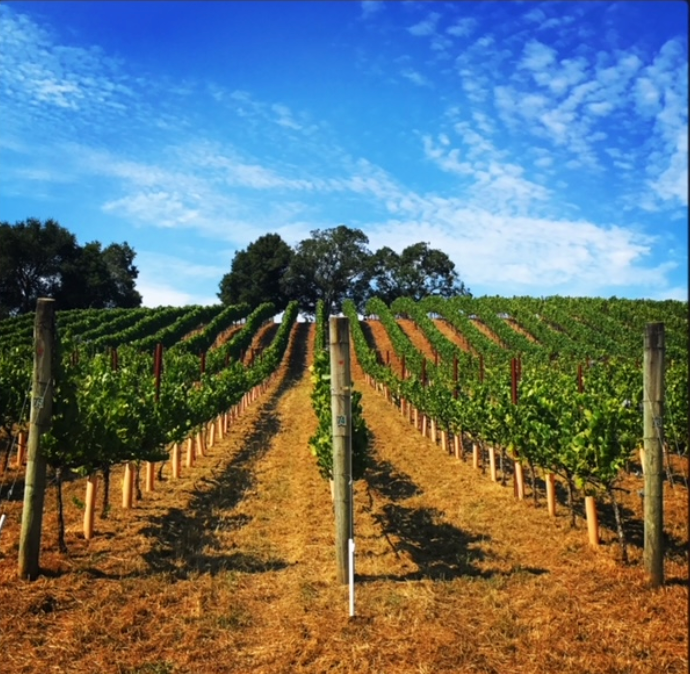 More reviews: www.princeofpinot.com/170/. Practically every Pinot Noir from vintages 2004-2016 has been reviewed
Elite California Pinot Noir Vineyards Part III: Central Coast - Santa Lucia Highlands
Garys’ Vineyard
Owners: Gary Franscioni and Gary Pisoni (thus the name of the vineyard is Garys’)
2017 Morgan Garys’ Vineyard Santa Lucia Highlands Pinot Noir 13.3% alc., 80 cases, $65. 100% destemmed, aged 10 months in 57% new French oak barrels. · Moderately light garnet color in the glass. Hold on to your hats when you pop the cork on this one! Engaging aromas of dark red berry and cherry and spice. The dark red and purple berry fruits really grab your attention on entry, showing the extra class that is typical of this vineyard. Very seductive, with a silken mouthfeel, masterful oak management, and plenty of juicy vitality. The ridiculously long finish stands out among the 2017 Morgan Pinot Noirs sampled on this day. A joyous wine to drink the following day as well from a previously opened bottle. It is wines like this that made me fall in love with Pinot Noir in the first place. A. Reviewed July 20, 2019. Score: 96
2017 Clarice Garys’ Vineyard Santa Lucia Highlands Pinot Noir 14.3% alc., $80, screw cap. This project from winemaker Adam Lee is named after his teetotaling grandmother Clarice. 54% whole cluster fermented. Aged in 66.6% new French oak barrels. · Moderate garnet color in the glass. Enticing aromas of dark cherry and spice box. A tad richer and more structured than the Rosella’s bottling. Exquisitely composed with a wide range of dark fruit flavors and a touch of spice. There is a good acidic vibe and the finish is amazingly long. When tasted from a previously opened bottle after 4 days, the wine was still superb but will be even more rewarding in a few years. Reviewed June 18, 2019. Score: 96
2018 Clarice Garys’ Vineyard Santa Lucia Highlands Pinot Noir 14.08% alc., $85, screw cap. 76.2% whole cluster fermented. Aged in 72.7% French oak barrels. · Moderately dark garnet color in the glass. Deep, dark and mysterious aromas of black fruits with an earthy tone. A little more concentrations and structure than the Rosella’s and not as welcoming at this stage. Still, the flamboyant fruit has charm, the suede tannins add textural seduction and the finish goes on and on and on.Still stellar when tasted from a previously opened bottle five days after opening. Cellaring will be beneficial, but this will always be the baddest boy in the three 2018 Clarice Pinot Noir lineup. Reviewed June 18, 2019. Score: 95
2018 Morgan Garys’ Vineyard Santa Lucia Highlands Pinot Noir 14.0% alc., 98 cases, $65. 100% destemmed, native yeast fermentation, aged 10 months in French oak barrels, 40% new. · Enticing and penetrating aromas of dark cherry, pomegranate, sandalwood and savory spices. Mid weight plus in heft, with highly flavorful black cherry, black raspberry and molasses flavors. Nicely balanced with integrated tannins and an extended finish. The most powerfully flavored of the 2018 Morgan Pinot Noirs tasted. Reviewed October 4, 2020. Score: 93
2019 Testarossa Garys’ Vineyard Santa Lucia Highlands Pinot Noir 14.3% alc., 600 cases, $76. Aged 16 months in French oak barrels, 57% new. · Moderate garnet color in the glass. Nicely composed perfume with scents of cherry, red grape, red rose petal and peppery herbs. Light to mid-weight in style with a glorious charge of vivid, spicy black cherry fruit. Amazingly long in the mouth and on the generous finish. Very polished with enviable harmony. At this stage, the palate far exceeds the nose in allure. Reviewed June 13, 2021. Score: 93
2019 Lucia Garys’ Vineyard Santa Lucia Highlands Pinot Noir 14.2% alc., $. · Dark garnet color in the glass. Reserved, but pleasant aromas of blackberry and spiced black cherry. Full-bodied in style with a plethora of dark red, purple and black fruits. Excellent fruit purity, charming and seamless with a polished finish of some length. A healthy backbone of tannin corrals the rich fruit. Score: 93
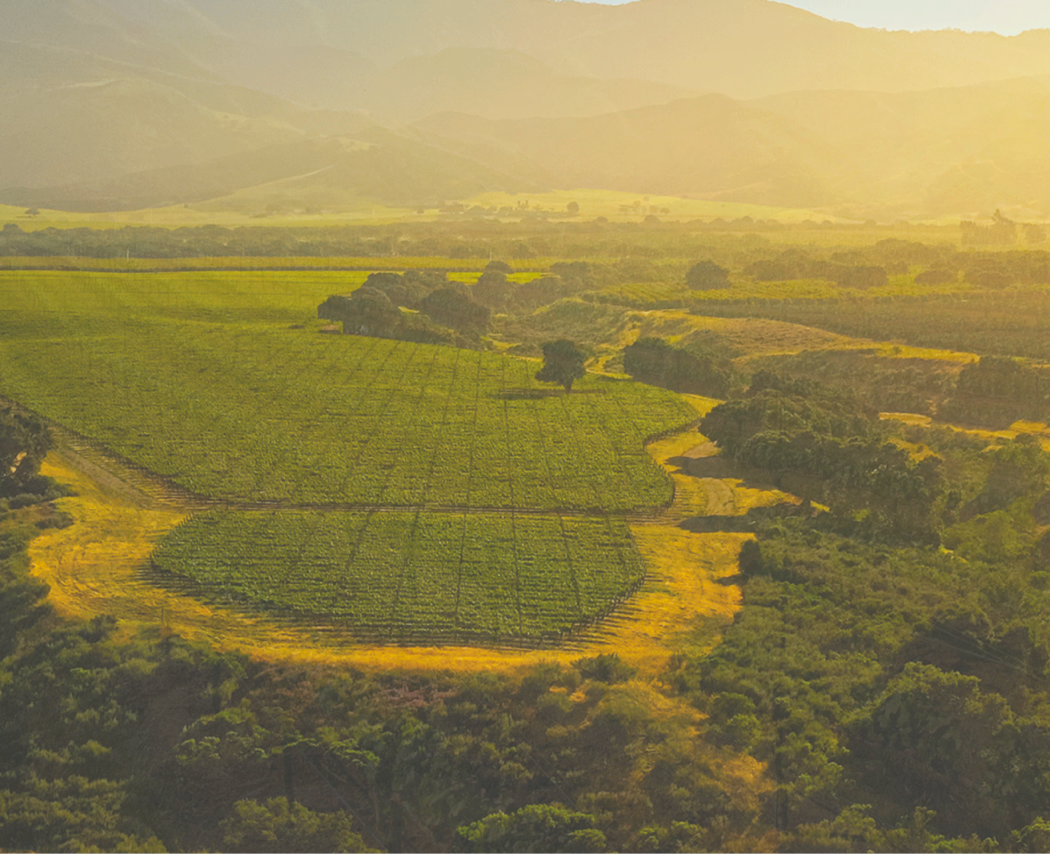 More reviews: www.princeofpinot.com/vineyard/201/
Morgan Double L Vineyard
Owners: Daniel and Donna Morgan
2017 Morgan Double L Vineyard Clone RC Santa Lucia Highlands Pinot Noir 14.0% alc., 100 cases, $65. Cuttings from a famous vineyard in Burgundy were grafted onto a small block of vines at the top of the estate Double L Vineyard. These organic grapes were 100% de-stemmed. Native yeast fermentation and aging for 11 months in French oak barrels, 45% new. · Light ruby red color in the glass. Bright aromas of cherry, spice and sous-bois. Light to mid weight in concentration and elegant in style, with flavors of red cherry, raspberry and cranberry with an accent of spice and botanical goodness. A dreamy, feminine wine with terrific balance and oak management that aims to please out of the chute. Reviewed March 23, 2019. Score: 94
2018 Morgan Double L Vineyard Santa Lucia Highlands Pinot Noir 14.2% alc., $. Crafted from organic grapes. · Moderately light garnet color in the glass. The nose attracts with effusive aromas of black cherry, blackberry, spice, and dark red rose petal. Unctuous purple and black berry flavors are delivered in a beautifully balanced format. Everything is in proper place an d the long, haunting, purple berry driven finish is very special. Still stellar when tasted the following day from a previously opened bottle predicting a long life ahead. Score: 95
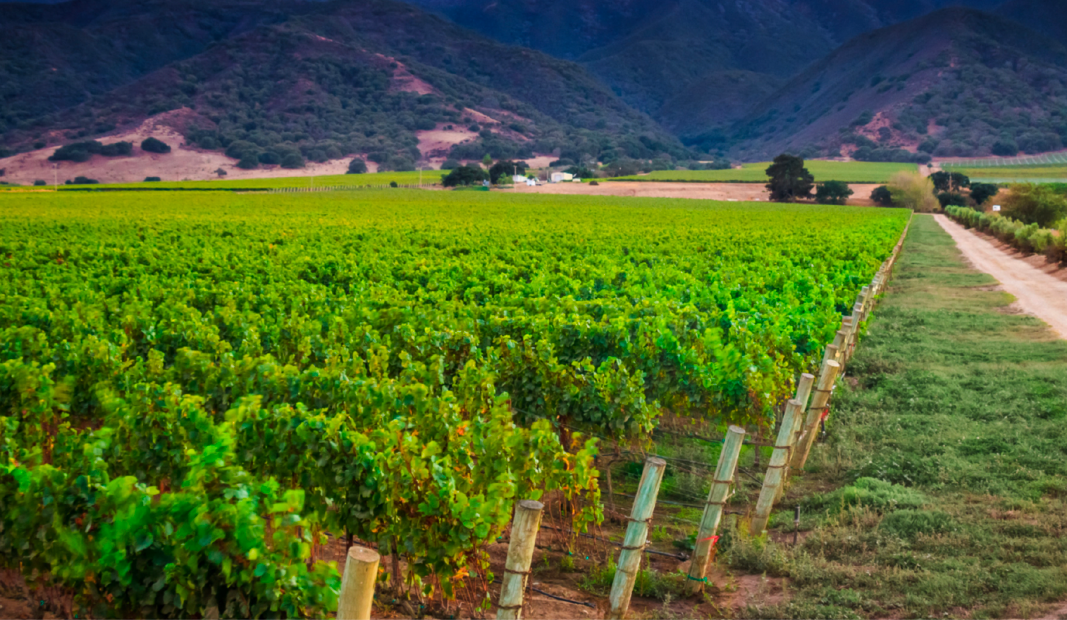 More reviews: www.princeofpinot.com/vineyard/858/
Pisoni Estate Vineyard
Owners: Pisoni family whose patriarch is Gary Pisoni
2011 ROAR Pisoni Vineyard Santa Lucia Highlands Pinot Noir 14.0% alc., 780 cases, $80. 24% whole cluster. Aged 11 months in French oak barrels, 61% new. Bottled unfined and unfiltered. · Moderately dark garnet color in the glass. Highly aromatic, with scents of blackberry, cola, tilled earth and old leather satchel. Very silky on the palate, with mid-weight flavors of cassis, blackberry and a savory earthiness. This wine has staying power, still holding its own and probably good for at least another 5+ years. Score: 94
2014 Pisoni Pisoni Estate Santa Lucia Highlands Pinot Noir 14.1% alc., $80. · Dark garnet color in the glass. Leading off are aromas of blackberry reduction, cigar box and old cask. Major sappy boysenberry and blackberry fruit with a moderately firm tannic backbone. The vivid fruit floods the mid palate in a weighty, dense style. When tasted the following day from a previously opened bottle, the nose was more fruity, the flavors were more showy with added spice, and the finish exhibited more persistence. Surprisingly young, this is a 20-year wine. Score: 94
2016 Pisoni Pisoni Estate Santa Lucia Highlands Pinot Noir 14.1% alc., $80. · Moderately dark garnet color in the glass. Shy, but pleasant aromas of black grape juice, blackberry reduction and root beer. Mid-weight plus in density, with an array of energetic dark fruits supported by a firm but sensible tannic backbone. The fruit really floods the mouth with goodness and the sleek mouthfeel satisfies. An amazingly long finish makes this wine stand out from the pack. Score: 94
2017 Pisoni Pisoni Estate Santa Lucia Highlands Pinot Noir 14.1% alc., 725 cases, $90. · Moderately dark garnet color in the glass. Plenty of dark berry fruit to satisfy with complacent tannins and an unusually long finish. Excellent but not extraordinary upon opening. The wine was a bit rustic and subdued and I was wishing for more. I re-corked the bottled and waited a day. The next day it was like an angel had descended from the heavens to infuse the wine with glorious appeal. The texture was unbelievably dreamy, the fruit had an elevated purity, and I kept looking at the glass as if I could not believe what I was drinking. I have rarely experienced the feeling that overcame me, and I understood why so many have been challenged to adequately express the appeal of a special Pinot Noir. The wine tasted of perfection, a window to the Holy Grail. Reviewed December 16, 2020. Score: 98
2018 Pisoni Pisoni Estate XX Anniversary Santa Lucia Highlands Pinot Noir 14.1% alc., $90. The label honors the Pisoni family's celebration of their twentieth vintage. · Moderately dark garnet color in the glass. Aromas of black cherry, spice cake, oak vanillin and loamy earth. Silken and luscious on the palate with intense blackberry and olallieberry fruit flavors in a mid-weight plus style. Rich but not jammy. Somewhat giving initially with tame tannins and a modicum of cedar-toned oak. Still a Lolita and this wine will undoubtedly benefit from another few years in the cellar. Not quite the seductive texture and mesmerizing charm of the 2017 vintage, but still a grand wine in its own right. Score: 96
2019 Paul Lato “Lancelot” Pisoni Vineyard Santa Lucia Highlands Pinot Noir 14.8% alc., $95. Unfiltered. · Moderate garnet color in the glass. Aromas of ripe strawberry, black cherry and earthy flora. The flavors echo the aromas with a bit of spice. A bit lighter in this vintage, with a juicy underbelly and reserved tannins. Easily enjoyed now, with excellent balance (no alcohol rears its head at this high ABV). Considerably more enjoyable when tasted the following day from a previously opened bottle. Score: 94
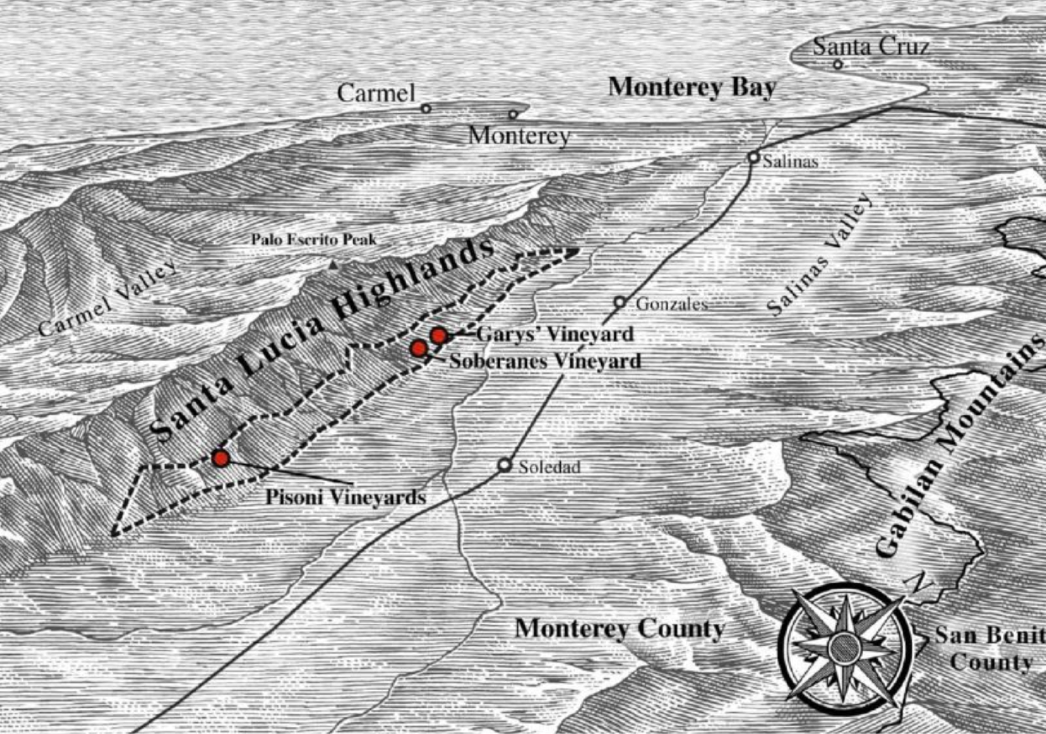
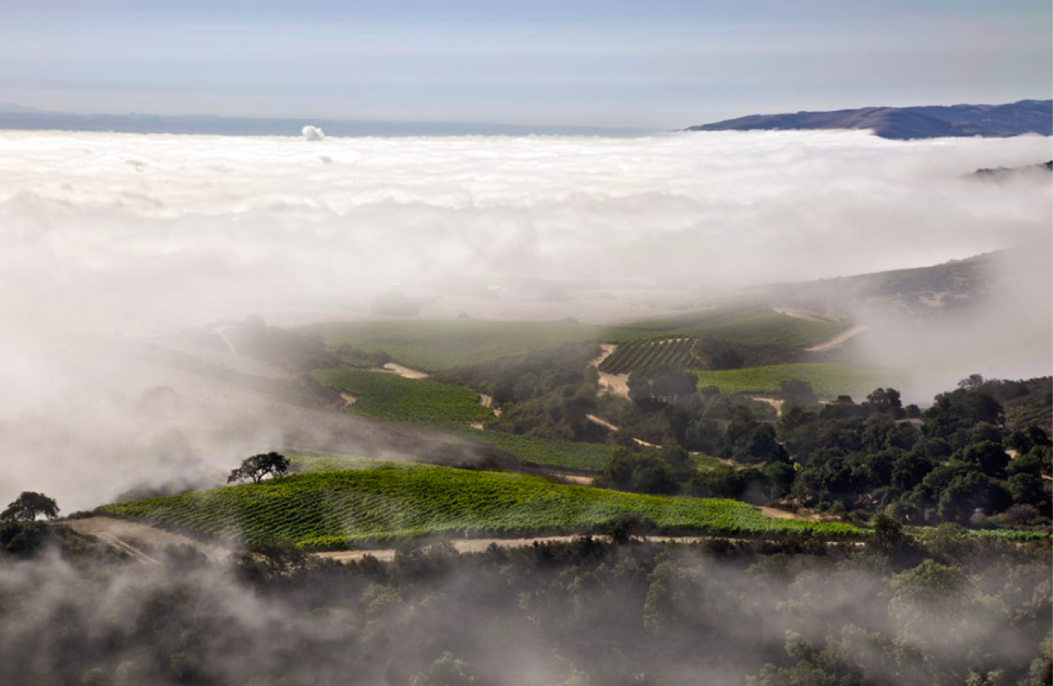 More reviews: www.princeofpinot.com/vineyard/238/. I have reviewed every vintage of Pisoni Estate Pinot Noir from 2004-2018
Tondré Grapefield
Owners: Father Tondré and son Joe Alarid
2012 Silver Mountain Vineyards Tondré Grapefield Santa Lucia Highlands Pinot Noir 14.4% alc., $44. · Moderate garnet color with slight yellowing of the rim in the glass., Energetic aromas of cherry, spice, leather and toast. Holding its own, with mid-weight flavors of black cherry, spice, char. root beer and toasty oak. Slightest alcoholic lip burn on the modest finish. Score: 90
2014 Silver Mountain Vineyards Tondré Grapefield Santa Lucia Highlands Pinot Noir 13.9% alc., $44. · Moderately light garnet color in the glass. Enticing aromas of cherry, spiced rum, purple grape and oak. Impressive cohesiveness with mid-weight flavors of black cherry and cola infused with complimentary oak. Impressive cherry-packed finish with some length. Score: 93
2015 Silver Mountain Vineyards Tondré Grapefield Santa Lucia Highlands Pinot Noir 13.0% alc., $44. · Moderately dark garnet color in the glass. A complex nose offers aromas of dark cherry, cola, earth, terra-cotta and a hint of oak. Robuist, mid-weight plus wine, with flavors of black cherry, black raspberry, dark chocolate. toast, and gingerbread. Velvety in texture with minimal tannins and a modest finish. Score: 92
2016 Silver Mountain Vineyards Tondré Grapefield Santa Lucia Highlands Pinot Noir 14.1% alc., $45. · Moderate garnet color in the glass. The nose is infused with aromas of cherry, raspberry and baking spices. Impressive charm and balance in a middleweight style offering flavors of darker cherry and berries with the faintest oak in the background. Appealing vibrancy with a deeply aromatic finish. Score: 93
2017 Sonnet Tondré Grapefield Santa Lucia Highlands Pinot Noir 14.3% alc., 340 cases, $45. Aged 20 months in 33% Hungarian oak barrels. Bottled unfined and unfiltered. · Moderately dark garnet color in the glass. Aromas of rose petal, pomegranate and subtle oak lead to a deliciously spiced black cherry core. Very spirited with uplifting acidity and supportive tannins. Very fresh and appealing, a compliment of oak, and a very persistent finish. Sonnet Pinot Noir wines are always a good value if you can find them. Score: 94
2018 Montagne Russe Tondré Grapefield Santa Lucia Highlands Pinot Noir 15.3% alc., 100 cases, $N/A. · Moderate garnet color in the glass. This is a well-oaken wine on both the nose and palate. Aromas of black cherry compote and rose petal lead to a mid-weight plus styled wine with integrated tannins and a silken mouthfeel. The alcohol is well submerged and the long finish is replete with ripe-fruited goodness. Score: 90
2018 Morgan Tondré Grapefield Santa Lucia Highlands Pinot Noir 13.9% alc., 126 cases, $65, Clones 777 and 115. 100% de-stemmed, native yeast primary fermentation, and aged 11 months in French oak barrels, 40% new. · Enthralling nose with vibrant aromas of cherry, baking spices and sandalwood. Lighter weighted in this vintage, with a core of red cherry and red berry fruits framed by caramel oak. Very charming in style with soft tannins and good length on the finish. The light fruit is somewhat superseded by oak. Reviewed October 4, 2020. Score: 91
2018 Tondré Wines Tondré Grapefield Santa Lucia Highlands Pinot Noir 14.3% alc., $43. · Moderate garnet color in the glass. Well-scented, with aromas of cherry pie, baking spices and oak-driven vanillin and caramel. Black cherry and purple berry fruit flavors lead the way along with hints of spice cake and oak. Suave in texture, with balanced tannins and a gigantic finish that seems to last 30 seconds. Score: 93
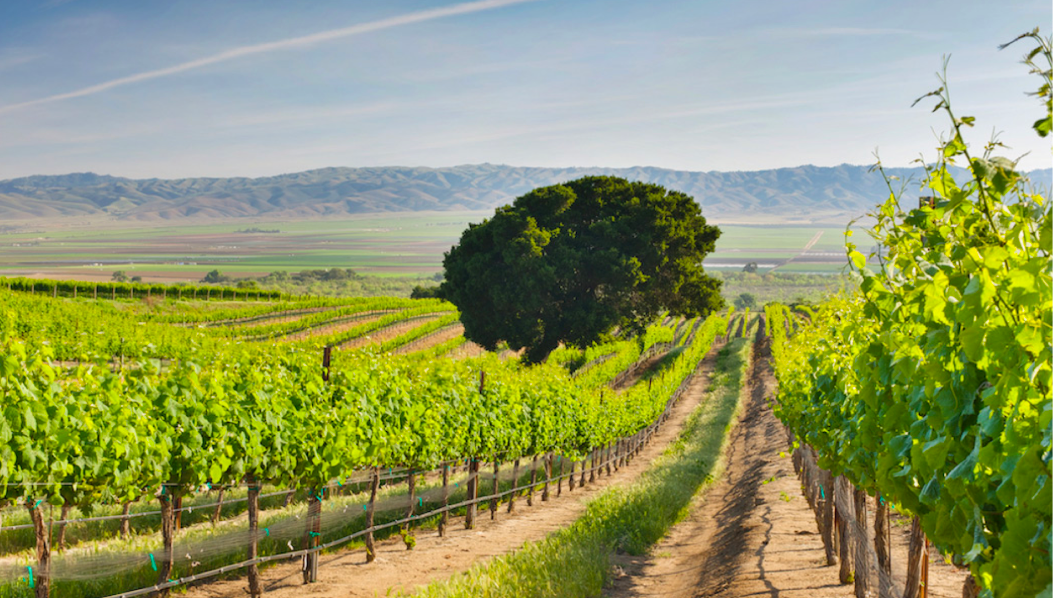 More reviews: www.princeofpinot.com/vineyard/86/
Elite California Pinot Noir Vineyards III: Central Coast - Sta. Rita Hills
Domaine de la Côte
Owners: Raj Parr, Sashi Moorman and business partners acquired the 40.5-acre property from Evening Land
Vineyards. Sahsi had developed the vineyards here in 2007 along with Phillip King.
2012 Domaine de la Côte Bloom’s Field Sta. Rita Hills Pinot Noir 12.5% alc., magnum. 50% whole cluster fermentation. · Moderate garnet color in the glass. Very seductive nose offering soaring aromas of cherry, burnt tobacco, sweet mulch and sap.The vibrant, middleweight flavors of black cherry and black raspberry are enhanced with accents of clove and cardamom spices. Slightly earthy with a shadow of oak and gossamer tannins. Juicy acidity propels the cherry-imbued finish.The wine still has 5+ years left in this format. Score: 92
2018 Domaine de la Côte Bloom’s field Sta. Rita Hills Pinot Noir 13.5% alc., 500 cases, $75. · Moderately dark garnet color in the glass. Lovely aromas of dark rose petal, black cherry, peppery herbs, burnt tobacco and pine sap. Less whole cluster input on the palate, showing mid-weight flavors of black cherry, black raspberry, and spice with a subtle herbaceous underpinning. Sleek in the mouth, with matched tannins, a touch of oak, and a lengthy finish. Unchanged when tasted the following day from a previously opened bottle. The infusion of herbs will please whole cluster fans. Score: 93
More reviews: www.princeofpinot.com/vineyard/1727/
Owners: Steve and Cathy Pepe and Cathy’s son Wes Hagen established this estate vineyard and wine label.
The couple purchased this former horse ranch property in 1994 and release the inaugural Pinot Noir in
2000 that was well-received by wine critics. With the 2015 vintage, The Pepes entered into a 15-year
vineyard lease with Hall Wines of Napa which markets Clos Pepe grapes under the Hall’s WALT label.
The Pepes retained ownership of the property and lived in the home on the estate. In May 2021, the
Pepe family listed Clos Pepe vineyards property and home for sale so the future of this vineyard is
unclear.
2017 Loring Wine Company Clos Pepe Vineyard Sta. Rita Hills Pinot Noir
14.2% alc., 400 cases, $54,
screw cap. Clones 115 and 777. Aged 10 months in 15% new French oak barrels.
·
Moderate garnet color in the
glass. Uplifting aromas of black cherry and spice rub lead to a mid weight plus styled wine with a generous
core of delicious black cherry and purple berry fruit. Supple tannins provide marvelous support and the
energetic acidity adds vigor. A compelling wine with an extremely long finish. Reviewed February 23, 2019.
Score: 94
2019 Beau Marchais Clos Pepe Vineyard Quest (West) Sta. Rita Hills Pinot Noir
15.1% alc., $95.
Pommard and 667 clones. 33% whole cluster. 48-day extended maceration.
·
Moderately dark garnet color in
the glass. Leading off are aromas of blackberry, blueberry, pomegranate, tilled earth and seasoned oak. Midweight
plus in style, packed with a dense core of purple and black fruits that are a bit unyielding at this point. A
floral note adds charm. Showing a little more oak and tannin than the East bottling but with a flood of fruit on a
longer finish. This wine offers more nuances and I found more appealing than the East bottling. Surely this
wine will benefit from a couple of years in the cellar. Reviewed March 21, 2021.
Score: 93
2019 Beau Marchais Clos Pepe Vineyard Estate (East) Sta. Rita Hills Pinot Noir
15.1% alc., $95. Clones
115 and Pommard.
·
Complex nose offering aromas of blackberry, cassis, violets, blueberries, underbrush, oak
spice and sweet pipe smoke. Mid-weight plus in heft with flavors that replicate the aromas with added tastes of
plum, tar and spice. Big-boned, yet sleek in texture. Infused with plenty of felty, dry tannins that contribute
some astringency to the long finish. The alcohol is well positioned in the overall balance. A tasting of the wine
the following day from an opened bottle required some coaxing in the glass to reveal itself. Reviewed March
21, 2021.
Score: 91
More reviews: www.princeofpinot.com/vineyard/88/
Owners: Originally, this was an estate vineyard established by Rick Longoria of Longoria Wines and owned by
Hank and Brenda Klehn. Adam Tolmach, proprietor and winemaker of The Ojai Vineyard, purchased the
vineyard in January 2021.
2018 The Ojai Vineyard Fe Ciega Vineyard Sta. Rita Hills Pinot Noir
12.5% alc., $53.
·
Moderately light
garnet color in the glass. Engaging aromas of black cherry, rose petal and herb cupboard. Exuberant flavors of
cherry, strawberry and cherry with a bit of spice and dried herbs in a middleweight fashion. The aromas and
flavors pick up interest over time in the glass and reach a peak the following day from a previously opened
bottle. The svelte tannins and long finish complete the grand impression.
Score: 94
More reviews: www.princeofpinot.com/vineyard/214/
Owners: Kathy Joseph acquired the 133-acre former flower farm in 1996.
2014 Pali Wine Co Fiddlestix Vineyard Sta. Rita Hills Pinot Noir
14.8% alc., $60. Clones 667, 777, 115 and
Pommard 4. Aged 15 months in French oak barrels, 50% new.
·
Moderately light garnet color in the glass. The
aromas are most vibrant upon opening, showing cherry, sweet pipe tobacco, and old leather. Agreeable midweight
spiced cherry core with added notes of black tea and earth. Firm tannins ply the background leaving
behind a bit of astringency on the finish. Alcohol does not stick out but there is awareness.
Score: 89
2017 Hartford Court Fiddlestix Vineyard Sta. Rita Hills Pinot Noir
14.8% alc., 195 cases, $70. Unfined and
unfiltered.
·
Moderately dark garnet color in the glass. Seductive aromas of Bing cherry and oak spice. Light to
mid-weight in richness, featuring flavors of black cherry, black raspberry and a hint of oak spice. Very fine grain
tannins and upbeat acidity compliment the fruit core. Plenty of gentle goodness in a glamorous wine that
exudes class.
Score: 93
2018 Ancien Fiddlestix Vineyard Sta. Rita Hills Pinot Noir
14.4% alc., 181 cases, $58.
·
100% de-stemmed,
5-day cold soak. Inoculated with proprietary yeasts for primary fermentation. Aged 17 months in French oak
barrels, a majority new. Wine held for a year after bottling before release. Moderately dark garnet color in the
glass. A fruit-driven nose displaying aromas of Bing cherry and boysenberry with minor notes of rose petal,
herb cracker and nutty oak. A sappy core of purple berry and plum fruit is deep on the palate. Beautifully
crafted, with integrated tannins, bright acidity and a milky softness. The vivid and flamboyant finish is
amazingly persistent. I can’t say enough good things about this wine that is the best from this vineyard that I
have tasted in recent memory.
Score: 95
2019 Cornerstone Cellars Fiddlestix Vineyard Sta. Rita Hills Pinot Noir
14.5% alc., 440 cases, $64. 50%
Dijon 667 and 50% Dijon 777.
·
Moderate garnet color in the glass. Fragrant aromas of black cherry compote,
spice and toasty oak. Deep, luscious flavors of dark cherry reduction, black raspberry and tarragon. Very
polished, with admirable balance and a generously fruited and very along finish. My only nit is the noticeable
oak that plies the background.
Score: 92
More reviews: www.princeofpinot.com/vineyard/135/
Owners: Sanford Winery/Terlato Wine Group (since 2002)
2016 Chanin Sanford & Benedict Vineyard Sta. Rita Hills Pinot Noir
13.9% alc., $30.
·
Moderately light
garnet color in the glass. Pleasing aromas of cranberry, prickly pear and clay. Light in weight offering flavors of
oak-dusted cherry, cranberry and spice. A good grip of acidity drives the red cherry finish. Easygoing with
restrained tannins and a modest finish. Unchanged when sampled the following day from a previously opened
bottle. A solid wine but not endearing.
Score: 91
2017 Sandhi Sanford & Benedict Vineyard Sta. Rita Hills Pinot Noir
13.8% alc., $45.
·
Moderately light
garnet color in the glass. Whole cluster driven aromas of spiced cherry, strawberry, and burnt tobacco. Lighter
and elegantly composed, with a core of cherry fruit. A bit smoky and stemmy (green), with a tart cherry finish of
modest length.
Score: 89
2018 Sanford Sanford & Benedict Vineyard Sta. Rita Hills Pinot Noir
13.5% alc., 2,611 cases, $75. Aged
16 months in French oak barrels, 30% new.Composed of 11 clones and represents the best lots of the harvest.
·
Moderately light garnet color in the glass. Aromas of cherry, spice cabinet, and vanilla latte. Somewhat delicate
in a mid-weight style with flavors of red cherry and red berry accompanied by cloying oak. Silky in the mouth
with svelte tannins and a modestly long finish.
Score: 91
2018 Sanford Block 4D Sanford & Benedict Vineyard Sta. Rita Hills Pinot Noir
13.5% alc., 212 cases,
$90. Sourced from a north-facing slope with rocky Botella clay loam soil. First planting of Dijon clone 943. Aged
16 months in French oak barrels, 30% new.
·
Moderate garnet color in the glass. Reserved but pleasant aromas
of dark cherry and purple berry. A fresh and crisp, fruit-driven style with plenty of black cherry and blackberry
fruits to satisfy. There are added hints of dark chocolate and sweet oak. Nicely balanced, with minimal tannins
and a richly-appointed, purple-fruited finish.
Score: 92
2018 Sanford Block 6 Sanford & Benedict Vineyard Sta. Rita Hills Pinot Noir
13.5% alc., 221 cases, $90.
A limited release from a steep, north-facing slope with rocky, calcium rich, clay loam soils. Clone 667. Aged 16
months in French oak barrels, 30% new.
·
Moderate garnet color in the glass. The aromas unfold over time in
the glass, revealing cherry, earthy flora and rose petal. Light to mid-weight in style and elegant and silky in
character with a charge of black cherry flavor supported by harmonious tannins and excellent acid-driven
vibrancy. Easygoing and easy to like, with a cherry-imbued finish.
Score: 93
2019 Sanford Sta. Rita Hills Pinot Noir
13.5% alc., 7,379 cases, $35. 44% Sanford & Benedict Vineyard and
56% La Rinconada Vineyard. A blend of 8 different Pinot Noir selections from several different soil types.
·
Moderate garnet color in the glass. Aromas of dark cherry, ripe strawberry, candy apple, spice and graham.
The mid-weight flavors echo the aromas of cherry and spice. Very open and giving with juicy acidity and a
modest but satisfying finish. An excellent everyday wine.
Score: 90
2018 Sanford Founders’ Vines Sta. Rita Hills Pinot Noir
13.5% alc., 61 cases, $N/A. The grapes for this
special wine come from the original, own-rooted planting in 1971. A tribute to the pioneering fathers of this
vineyard, Michael Benedict and Richard Sanford. Aged 16 months in French oak barrels, 28% new.
·
Moderately
light garnet color in the glass. Seductive aromas of red berry, underbrush and tilled earth. Delicious and
complex in a middleweight style, with an array of flavors including red cherry and raspberry, spice, dried herbs
and cocoa. Very intriguing and notably refined with subtle tannins and the longest finish of all the 2018 Sanford
Pinot Noirs. A connoisseur’s Pinot Noir that shows all the glory of old vine Pinot Noir.
Score: 95
2019 Testarrosa Sanford & Benedict Vineyard Sta. Rita Hills Pinot Noir
14.3% alc., 576 cases, $74. Aged
15 months in French oak barrels, 54% new.
·
Moderately dark garnet color in the glass. Aromas of dark cherry
and baking spice pick up intensity over time in the glass. A very comforting, velvety mouthfeel creates a
favorable initial impression. Mid-weight flavors of cherry and raspberry are accompanied by a thread of citrus in
the background. Acid-driven freshness and vibrancy add to the appeal. The finish is persistent and quenching.
Reviewed June 13, 2021.
Score: 94
More reviews: www.princeofpinot.com/vineyard/53/
Owners: Bob Davids and Prescott-Ashe (who invested in Sea Smoke and became a capital partner in 2012).
2017 Sea Smoke Southing Sta. Rita Hills Pinot Noir
14.7% alc., $70. Released October 2019. 100% destemmed,
inoculated with cultured yeasts after a 5-day cold soak. Manual punch downs. Aged in French oak
barrels, 28% new. Bottled unfined and unfiltered.
·
Moderately dark garnet color in the glass. Really nice
aromas of black raspberry, black cherry, rose petal, and damp soil. The flavors echo the aromas with a slight
echo of oak. Good harmony with quenching acidity and suave tannins. The finish is amazingly long. This wine
is now ready to be the centerpiece of your next special dinner.
Score: 95
2018 Sea Smoke Southing Sta. Rita Hills Pinot Noir
14.5% alc., $N/A. Released October 2020. 100% destemmed,
inoculated with cultured yeasts after a 5-day cold soak, and aged in French oak barrels, 28% new.
Bottled unfined and unfiltered.
·
Moderately dark garnet color in the glass. Very complex nose displaying aromas
of earthy flora, black cherry, white pepper, tarragon, and seasoned oak. A delightful wine with a discrete
concentration of black cherry and black raspberry fruit flavors with a valued touch of spice. A little more elegant
than the 2017 Southing but offering a very long finish like that wine. Excellent rapport between the fruit, tannins
and acidity.
Score: 94
2017 Sea Smoke Ten Sta. Rita Hills Pinot Noir
14.8% alc., $82. Released October 2019. Composed of ten
clones from which the wine takes its name. 100% de-stemmed, inoculated with cultured yeasts after a 5-day
cold soak, aged in French oak barrels, 68% new. Bottled unfined and unfiltered.
·
Dark garnet color in the glass.
Aromas of black cherry, blackberry, dark rose petal and earthy flora lead off. Mouth-filling, extravagant purple
and black fruits attack the palate in a mid-weight plus style. Sleek and polished with a touch of oak. The finish
is not as long as the 2017 Southing bottling but this wine has more mid palate impact. Still somewhat tight
compared to the 20`17 Southing with more tannins and probably more age worthy. Much better the following
day with more aromatic goodness.
Score: 94
2018 Sea Smoke Ten Sta. Rita Hills Pinot Noir
14.7% alc., N/A. Released October 2020. 100% destemmed,
inoculated with cultured yeasts after a 5-day cold soak, and aged in French oak barrels, 68% new.
·
Moderately dark garnet color in the glass. Brooding aromas initially exhibiting aromas of earth-charged dark
fruits. Mid-weight plus in size, with plenty of blackberry and cassis fruit to satisfy. Oak plays a noticeable
role.Tightly coiled, with an extremely long, black raspberry infused finish. More personality when tasted the
following day from a previously opened bottle. Typically the Southing bottling is more approachable and
features dark red fruits. The Ten bottling is bigger, richer, and displays more tannin and oak input while blacker
fruits are featured.
Score: 94
More reviews: www.princeofpinot.com/vineyard/141/
Elite California Pinot Noir Vineyards III Central Coast - Other Appellations
Bien Nacido Vineyard - Santa Maria Valley AVA
Owners: The Miller Family Wine Company (part of The Thornhill Companies)
13.5% alc., $100. sourced from the oldest own-rooted vines in Bien Nacido Vineyard. · Moderate garnet color in the glass. The nose reveals itself over time in the glass to to offer a marriage of cherry and toasty oak aromas. Light to mid-weight in style, with flavors of cherry, strawberry, spice and toasty oak. Elegantly fruited, even close to shallow with an appealing juiciness. The wine has a rustic, savory bearing with a modicum of toasty oak in the background. Better over time in the glass, showing off a resolute but not especially long finish. Reviewed August 29, 2020. Score: 91
2016 Foxen Block 8 Bien Nacido Vineyard Santa Maria Valley Pinot Noir 13.4% alc., $60. · Moderately dark garnet color in the glass. Very savory nose highlighting aromas of dried herbs, stem, saddle leather and tilled earth. Fruit shows up on the palate as sweet blackberry and pomegranate but still dominated by savory notes. Sleek in texture with mild tannins and a cut of citrus-infused fruit on the finish. More fruit comes to the forefront when tasted the following day from a previously opened bottle. Score: 92
2017 Gary Farrell Bien Nacido Vineyard Santa Maria Valley Pinot Noir 13.3% alc., $70. Pommard clone from the legendary Q Block, considered the most prestigious Pinot Noir block in this vineyard. · Light garnet color in the glass. The scent of dark red cherry and berry, oak spice and floral perfume leads to a mid-weight infusion of oak-kissed Bing cherry and dark strawberry fruit flavors. Fresh and satisfying without noticeable tannins, silky in texture, and offering an arrow of acidity that drives a lip-smacking, extended finish. Reviewed August 29, 2020. Score: 93
2018 Gary Farrell Bien Nacido Vineyard Santa Maria Valley Pinot Noir 13.1% alc., 565 cases, $70. Released May 2021. 100% Pommard selection from the legendary Q Block, considered the most prestigious Pinot Noir block in this vineyard. Some whole clusters added later during fermentation. 4-7 day cold soak, 7-10 day extended maceration after fermentation. Aged 15 months on the primary lees in French oak barrels, 40% new. · A lighter, elegantly styled wine that still packs a punch. Lovely aromas of red grape, cherry, strawberry and raspberry that offer noticeable mid-palate intensity. A subtle savory underbelly of spice and herbs lend interest. Very refreshing and easy to approach, with an incredibly long finish. Score: 93
2018 Bien Nacido Estate Santa Maria Valley Pinot Noir 13.0% alc., $50. The goal of this wine is to reflect the diversity of soils and unique voice of this vineyard. · Moderate garnet color in the glass. The nose has fruit (strawberry, red currant), spice, and earthy elements. Flavors of black cherry, ripe strawberry and red licorice with the slightest vegetative underbelly. Middleweight in fashion, with a silky mouthfeel, balanced tannins, wellmannered acidity and a modest but pleasing finish. Score: 92
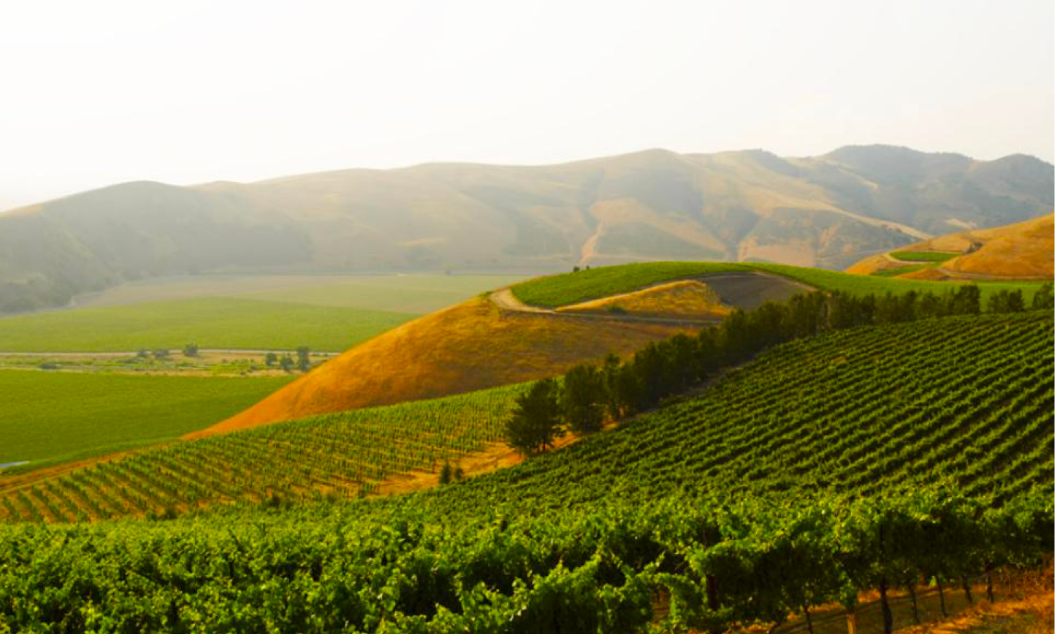 More reviews: www.princeofpinot.com/vineyard/1537/
Calera Jensen Vineyard, Mt. Harlan AVA
Owners: Calera was originally founded in 1975 by Josh Jensen who is often referred to as ‘Mr. Pinot.’
Duckhorn Wine Company purchased Calera Wine Company in 2017, including the winery, the brand,
the tasting room, and the winery’s prime vineyards. Duckhorn was acquired by San Francisco-based
TSG Consumer Partners in 2016.
2016 Calera Jensen Vineyard Mt. Harlan Pinot Noir 14.8% alc., 1,000 cases, $95. Calera selection. Aged 17 months in French oak barrels, 30% new. · Moderately light garnet color in the glass. Engaging aromas of plum, blackest cherry, and sous bois. Gracious in the mouth, with a mid weight core of black cherry and black raspberry fruits with deft oak dressing. Firm, but not intrusive tannins and noticeable cut on the the finish that goes on and on. There are several features of this wine that make it special including the seductive texture, the energy imparted by good natural acidity, the purity of fruit flavor, the subtle savory thread, and the extremely long, grand cru finish. Much more appealing when sampled the following day from a previously opened and recorked bottle. An exceptional wine. Reviewed June 2019. Score: 95
2018 Calera Jensen Vineyard Mt. Harlan Pinot Noir 14.7% alc., $100. Calera selection. Whole cluster fermented, native yeast. Aged in French oak barrels, 30% new. · Moderately dark garnet color in the glass. The nose rises up over time revealing wonderful aromas of dark berries, plum, dried beef, clay and wine cellar. Inviting flavors of purple grape and pomegranate framed by supportive fine-grain tannins and a good cut of acidity. The finish is drenched in ripe dark fruits and is amazingly long. The fruit is definitely ripe but not overly mature. Even better when tasted the following day from a previously opened bottle when some spice shows up and the long finish continues to amaze. Very age worthy. Score: 95
 More reviews: www.princeofpinot.com/vineyard/73/
Hoffman Mountain Ranch (HMR) Vineyard, Adelaida Hills AVA
Owners: The original Hoffman Mountain Ranch property was owned by Dr. and Mrs. Hoffman beginning in
1961. Financial difficulties caused them to lose the property in 1982 to IntraLeisure, Inc. In 1989, the
ranch was sold to Japanese investors who renamed it San Luis Winery, Inc. The Van Steenwyk family,
owners of nearby Adelaida Vineyards & Winery, assumed ownership in 1994.
2018 Adelaida HMR Estate Vineyard Adelaida District Paso Robles Pinot Noir 14.1% alc., $60. · Moderately light garnet color in the glass. A nose you could drink, with hi-tone scents of fresh black cherry, cardamom spice and sous bois. The layers of discreetly concentrated and delicious black cherry and blackberry fruits are expansive on the mid palate and finish. A riff of spice adds interest. A bit of tannin tenacity adds to the buffed and welcoming texture. This wine really infuses the palate with charm. A pinotgasm. Reviewed August 29, 2020. Score: 97
2018 Adelaida HMR Estate Vineyard Adelaida District Paso Robles Pinot Noir 14.2% alc., $60. · Moderate garnet color in the glass. Fetching aromas of black cherry and earthy flora lead off. The mid-weight flavors of black cherry and boysenberry are striking and exhibit exceptional length in the mouth and on the finish. Hints of pastry crust, vanilla and baking spice add interest. A sophisticated wine that is driven by wellintegrated, crunchy acidity. The finish seemingly lasts forever and leaves behind a memorable echo of dark fruited aromatic goodness. When tasted from an open bottle several hours later, my notes say simply, “Wonderful!" Reviewed August 29, 2020. Score: 96
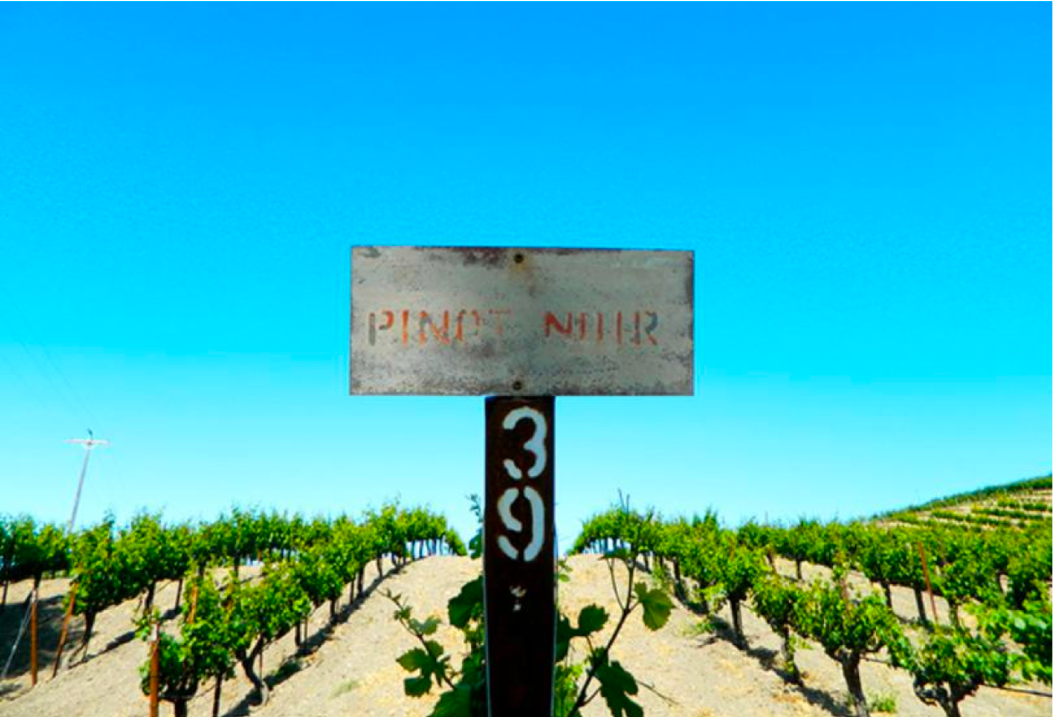 More reviews: www.princeofpinot.com/vineyard/350/
Rosemary’s Vineyard, Arroyo Grande Valley AVA
Owners: Brian Talley
2018 Talley Vineyards Rosemary’s Vineyard Arroyo Grande Valley Pinot Noir 13.9% alc., 575 cases, $80. · Moderate garnet color in the glass. Plenty of sweet Pinot perfume including aromas of cherry, baking spices, and red rose petal. Moderately rich flavors of black cherry and blackberry framed by silky tannins and a compliment of oak. Lustrous and giving, with a grand finish. Still terrific when tasted two days later from a previously opened bottle. Score: 95
2019 Testarossa Rosemary’s Vineyard Arroyo Grande Valley Pinot Noir 14.3% alc., 1,000 cases, $74. · Dark garnet color in the glass. Plenty to like in the nose that offers scents of black cherry, terra-cotta, underbrush and a hint of toasty oak. Toothsome flavors of dark cherry, black raspberry, and blackberry with a hint of savory herbs and welcome oak. Clearly special, with an appealing sappy richness framed by balanced tannins, and a sleek texture. This wine hits all the bass notes with its tangy dark fruits. Surprisingly giving at this young age. Score: 95
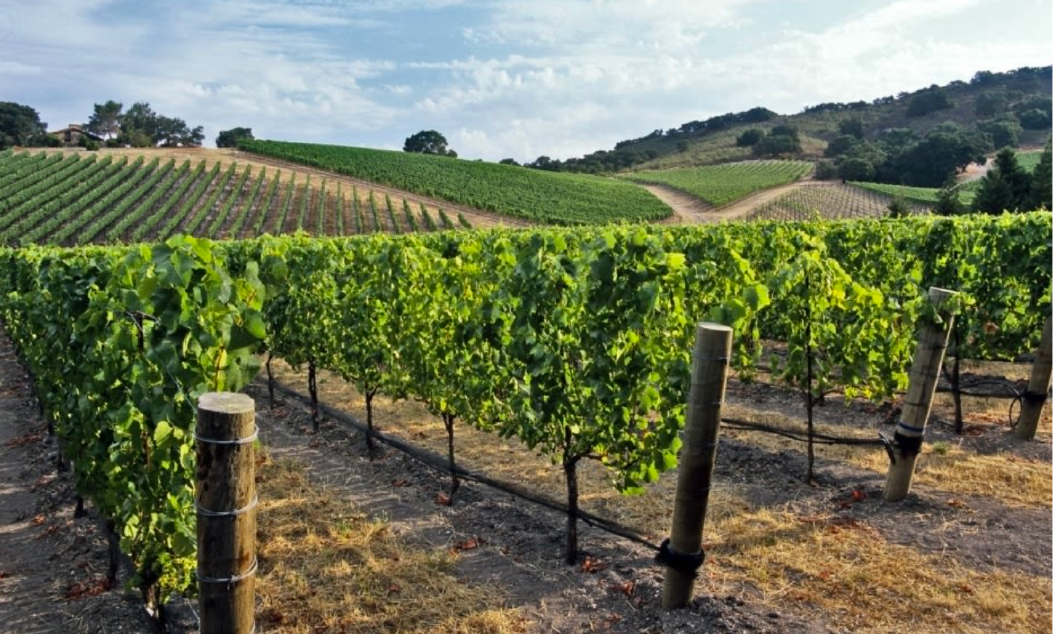 More reviews: www.princeofpinot.com/vineyard/329/
Solomon Hills Vineyard, Santa Maria Valley AVA
Owners: The companion vineyard to Bien Nacido Vineyard was planted by the Miller Family in 1999.
2016 Paul Lato “Suerte” Solomon Hills Vineyard Santa Maria Valley Pinot Noir 14.1% alc., $80. · Moderate garnet color in the glass. The nose is both fruity and savory, combining aromas of black raspberry and spiced black plum with aromas of dried herbs and tobacco. The savory theme continues on the palate that features mid weight purple and black berry fruits that are permeated with earthy and herbal flavors The wine has a very soothing texture and a fine, but not noteworthy finish. Unchanged when tasted the following day from a previously opened and re-corked bottle. Reviewed June 9, 2018. Score: 92
2018 Solomon Hills Estate Santa Maria Valley Pinot Noir 13.0% alc.,634 cases, $60. Pommard and Dijon 115 and 667 clones. 30% whole cluster. Native primary and malolactic fermentations. Aged 16 months in French oak barrels, 30% new. Bottled unfined and unfiltered. · Moderate garnet color in the glass. Giving aromas of dark cherry and raspberry, earthy flora, dark spices and dried herbs. The flavors echo the aromas with added flavors of white pepper and Italian herbs. There is good lift from bright acidity and appealing length on the palate and on the finish. Score: 93
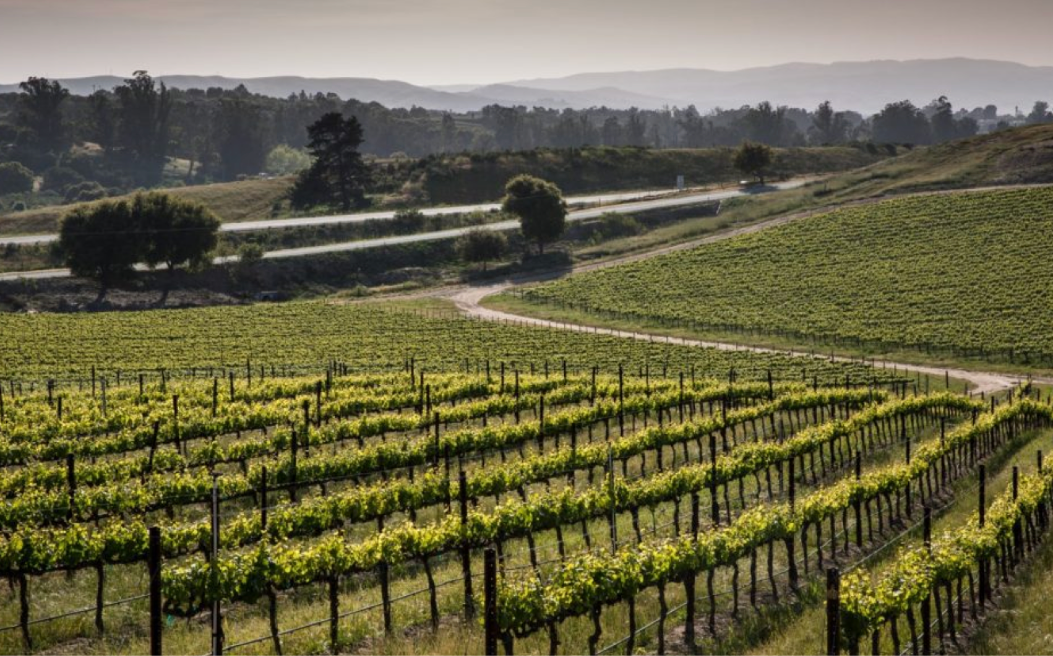 More reviews: www.princeofpinot.com/vineyard/137/
Exceptionally High-Scoring Wines in This Issue
982017 Pisoni Pisoni Estate Santa Lucia Highlands Pinot Noir
97
2012 Rhys Alpine Vineyard Santa Cruz Mountains Pinot Noir
96
2017 Clarice Garys’ Vineyard Santa Lucia Highlands Pinot Noir
95
2017 Calera Jensen Vineyard Mt. Harlan Pinot Noir
94
2006 Rhys Alpine Vineyard Santa Cruz Mountains Pinot Noir
My Week With Jim Clendenen by Zack Eidson
It is rare that I include a feature in the PinotFile written by other contributors. This timely tale of personal experience with Jim Clendenen seemed highly appropriate given his recent passing and the several special vineyards featured in this issue that were sources of Jim’s wines. Zack Eidson is the general manager of MetroWines in Asheville, North Carolina. He entered a contest a few years ago to win a week at harvest with Jim and won. This was such a special experience he wanted to share it with my readers. I was honored that he chose the PinotFile. Zack has been often reminiscing about the time he spent with Jim in September 2012. The harvest was one of the most abundant in recent years and extra hands on deck were welcomed and appreciated. It also turned out to be one of the memorable weeks of Zack's life. Here is his experience in his own words.
The wine world has lost a true legend. Jim Clendenen, a pioneer in his industry is gone but he will never be forgotten because he has left a tasting impression on generations of winemakers and wine professionals. In the international wine industry, being “old school” is considered hip in Italy, France, and Greece, yet being old school in California is considered passé. This may have to do with how young the California wine scene is in comparison to some countries whose wine history dates back to 6,000 BC. Jim was considered old school and wore that badge proudly. I considered his philosophies timeless. He championed the notion of enjoying a glass of wine with lunch without getting drunk. During his career, he focused on making lower alcohol wines that were balanced and were a better accompaniment with food. Food and wine were his passion in life and this evident to me within 5 minutes of our meeting. In the 39 years of making Au Bon Climat wines, Jim never changed his wine labels. I thought that they reflected his personal uniqueness. Many considered these labels old school and dated. But I considered them timeless.
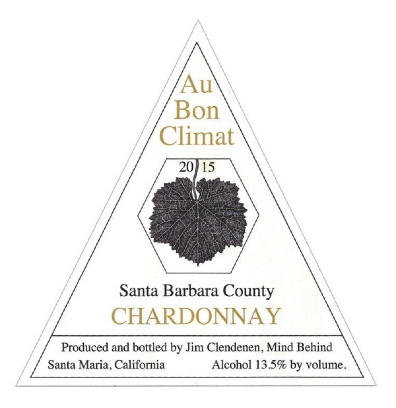 Chapter 1: The Contest I worked for a wine distributor in Cincinnati, Ohio, that sold Au Bon Climat and Clendenen Family Vineyard wines throughout the state of Ohio. Jim agreed to host one of my company’s sales representatives. I was relatively inexperienced as a sales representative so I assumed that a sales competition to win a trip to Santa Maria, California, would not be in the cards. When it was announced that the contest would be based on an essay to Jim answering the question, “Why should I choose you?” I wrote an essay that expressed a passionate plea yet was humble, heartfelt, and honest. I accompanied my essay with a video that showed testimonials from my customers. I believe I was the only one that did the essay and testimonial video production. Chapter 2: The Ranch In late September 2012, I packed my bags and flew to Los Angeles. I rented a car and drove north along beautiful Highway 101. My first stop was at Bien Nacido Vineyard where Jim’s winery and compound were located. I was directed to Jim’s ranch where my quarters would be during my stint working harvest at Au Bon Climat. I was immediately taken by the views and the amazing guest house Jim had constructed. I still remember the scent of leather and wood that reminded me of cabins I stayed in as a kid in the mountains of Colorado.
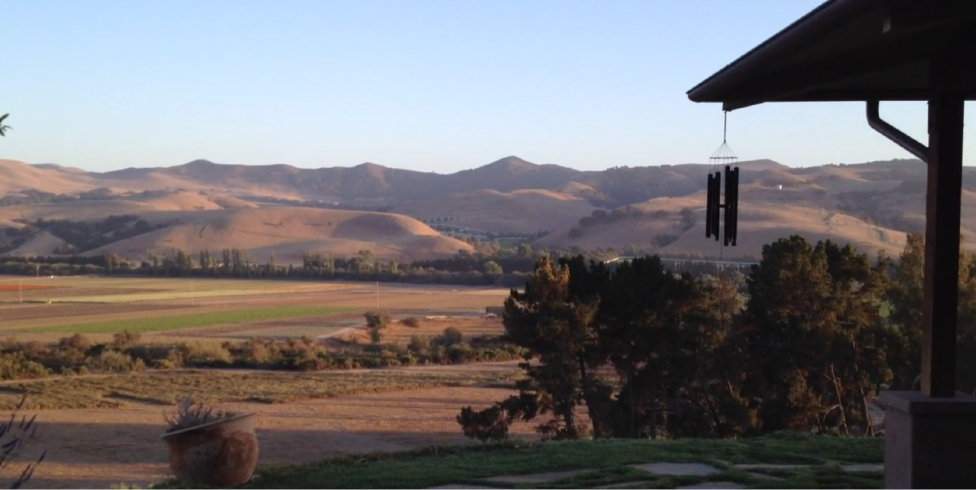 I spent the week in my new home drinking with new friends, resting my aching body from working the crush, cooking vegetables from the garden, staying up too late playing the drums and listening to techno music with a budding winemaker Frenchman, while making wine in a closet and meeting a future business mentor.
Chapter 3: Harvest On the first day working harvest, I awoke early to the sound of cannon fire. Surrounded by vineyards, I quickly realized that this was the winegrowers' way of keeping birds away. Evidently, waxwings really enjoy their Chardonnay. I arrived at the winery early in the morning and was immediately put to work doing punch-downs and pumpovers on red wine. Jim wanted punch-downs twice a day, once in the morning and once before everyone left for the day. This process happened every day during fermentation which lasted 14 days. I quickly learned to look for the open-top tanks closer to the end of fermentation because they were easier to punch down. A pump-over was done towards the beginning and the end of fermentation. The juice was pumped from under the cap to the top of the cap to stir it up. I loved this part of my job because I could sit and enjoy the views while I was working hard stirring hundreds of gallons of wine. I used a large PVC pipe with slits cut in it to allow the wine into the pipe but not the skins. The juice in the pipe was pumped through a gas-powered pump and out the hose on top of the cap (see photo below).
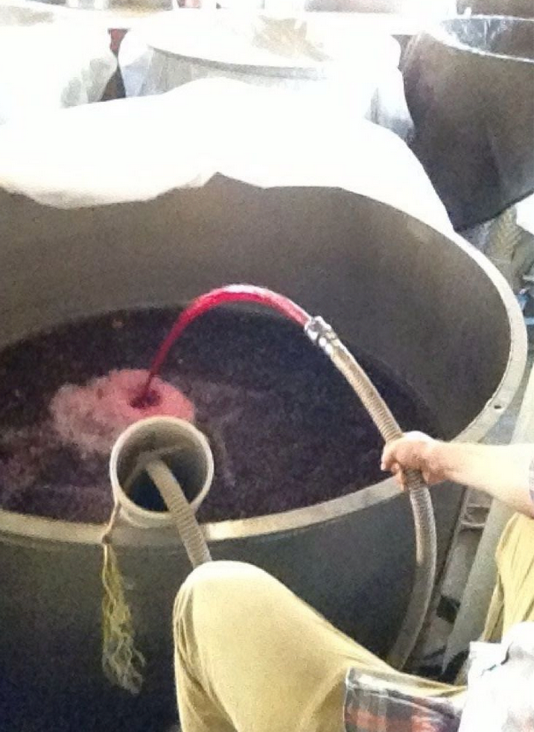 I also worked on the de-stemmer, the first location that red wine grapes are dropped off after harvest in the vineyards. After the stems were removed from the grapes, the juice was pumped into tanks to start the fermentation. Human interaction was necessary to manage the stems the machine was spitting out and to regulate the pump to keep the flow going. It did not take long for met ask, “When do we stomp the grapes?” This process at Au Bon Climat is mainly used to fit as many grapes as possible into the large industrial press. During all the excitement, Jim was always at the stove prepping lunch for the staff. He would cook every day for about twenty people. His meals were fantastic and the wine he opened to accompany the food was unbelievable. Jim would pull about ten bottles from the winery’s cellar and the wines were passed around for the 1-2 hour lunch break.
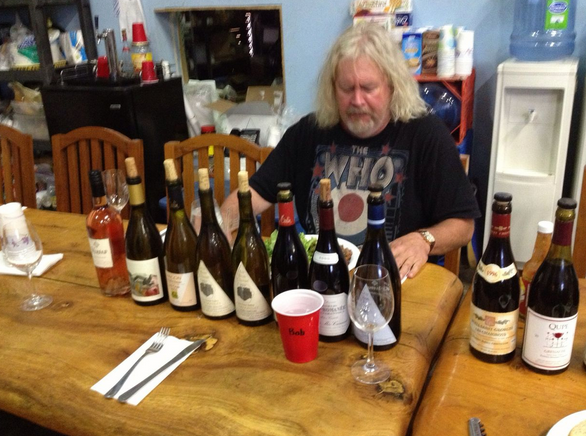 An interesting part of working harvest was checking grape ripeness levels in order to determine the optimum time to pick. That decision was primarily determined in the lab, but I went out with Jim and together we randomly selected clusters as we walked down the vineyard rows. We picked a bucket full of clusters and took them back to the lab. I crushed the grapes in the bucket and then the enologist checked the acidity levels as well as Brix (sugar) levels. Working harvest was an eye-opening experience. Although it was very labor-intensive, it was rewarding. At one point I joked to Jim that his contest was a fraud and he developed the contest only to obtain free labor. He laughed and said, This is an education son,” and then turned to me and remarked, “Time to clean the tanks.” Chapter 4: The Frenchman and the Budding Winemaker At the end of each day, I was exhausted. Everything hurt. Finished wine is elegant and glamorous, but the amount of effort and labor put into its production is far from it. I should have gone back to my quarters at the ranch and rested each night to recharge for the following day, but for fear of missing out I partied with the Frenchman and the budding winemaker every night. These two gentlemen, Theo and Marc, were staying at the guest house at the ranch and were interning at Au Bon Climat. The Frenchman’s father was a winemaker in Macon, France, while Marc was a California surfer dude learning to make wine with a legend. To my knowledge, Marc never left the compound at Au Bon Climat and now makes his wine under the Piro label. Every night before leaving, Jim let us pick wines from the winery’s cellar. It did not matter if the wines were 15, 20 or 30 years old. These were some of the best wines that I had ever tasted. We scrounged for food in the evenings, played the drum set at the ranch, and lasted to about midnight before heading off to bed. I found out that midnight is when the French start blasting techno music before winding down an hour later. A the end of my trip, both Theo and Marc felt like brothers. I spent every minute with them except for part of the week when I stayed at Jim’s house and hung with him for a few days. Theo Merlin is pictured below.
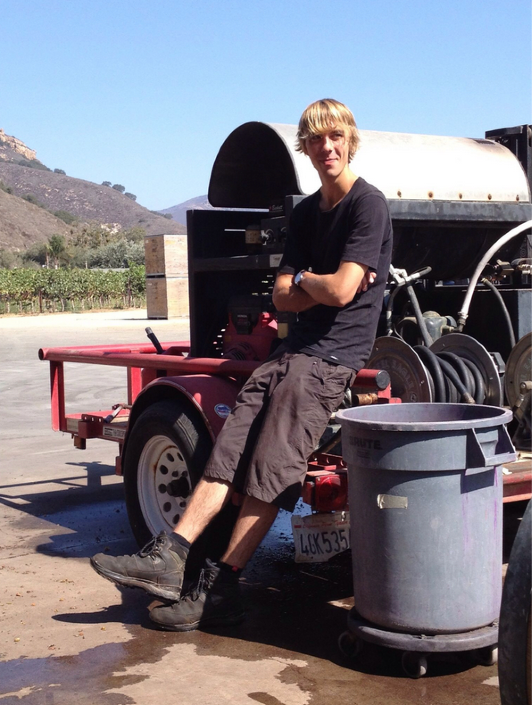
Chapter 5: Divine Intervention Prior to my trip, I was at a crossroads in my life. Happily married, I was on a mission to pursue a wine career. Back home in Cincinnati, I was peddling wines to wine shops and restaurants with a burning desire to open my own wine shop. I was on the fence because I liked the sales job I had because it allowed me to take trips to California and meet industry leaders. One day during my week, I was awarded a day of rest one and I decided to spend the time at Jim’s ranch. I wanted to take advantage of the amazing views (see photo below) and take advantage of the garden, so I made myself at home. I found some dry pasta, picked some tomatoes and basil, and made one of the best pasta dishes I had ever eaten. I had never experienced fresh California tomatoes before. While I was enjoying the pasta, a random guy walked into the ranch.
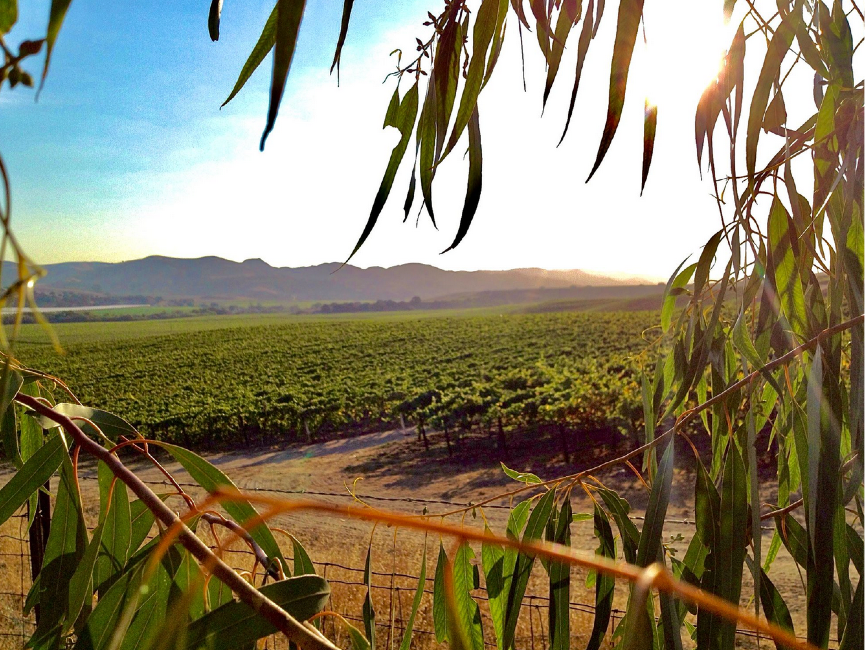 I was somewhat alarmed but soon learned the guy, whose name was John, was a wine store proprietor from Vancouver, Washington, dropping in to say hello to Jim who was an old friend. Shortly after we met, I received a phone call from Jim telling me I would have a roommate for the night. That night, John and I chatted for a while, and I picked his brain about opening a wine store. His insight, experience, and motivation are ultimately what led me to take the leap and open a wine store of my own. That day and chance meeting felt like divine intervention. My mind was made up and I knew what I wanted to do. Within a few months of my return from California, I quit my job, moonlighted as a bartender, and prepped and curated my own wine shop during the day. The shop ultimately opened in March 2013. Years later, I would still reach out frequently to John, asking for advice about running a retail wine store. Chapter 6: Brumbies at the Guest House One day while working harvest, Jim said, “Grab your stuff, you are coming home with me.” Jim’s home was about a 20-minute drive from the winery and separate from the guest ranch. At this time, I had no idea what he had planned. He showed me the guest house near his pool and hot tub area. When I went to take a shower, I found spider webs galore. It seemed like no one had stayed there for years. There wasn’t any toilet paper, soap, or towels. I had not come prepared since he plucked me from harvest at the winery earlier. I went ahead and showered to freshen up. I met Jim in his house for a glass of wine and some cheese. When he went to the stove to begin cooking, I snuck into the bathroom to steal some toilet paper and soap. His clothes were splayed all over the bathroom. This legend was a human, after all, living the life of a bachelor. I sat down to eat one of the best meals of my life. Jim cooked me a 5-course meal with wine pairings for each course. I felt very special, and thoroughly enjoyed my chat with him late into the night. At the end of the meal, he said, “Well, I am headed to the hot tub and you are welcome to join me.” I declined and went off to bed in the bare guest house. I the middle of the night, I was awakened to a sound like a horse snorting outside the window. Soon it sounded like multiple wild animals walking around in the gravel driveway next to the guest house and soon the sounds led to the roof. I was both disturbed and scared. I laid there for what seemed like hours to what seemed to be a gathering of brumbies (wild horses) outside my window. When I woke up at dawn, I went outside but found no sign of animal tracks. It all seemed so bizarre. I was embarrassed to tell Jim, so I asked a few questions about the wildlife in the area and he assured me that there were not any wild horses running around. I said, “Jim, I think your guest house is haunted.” He remarked with a laugh, “You are not the first to say that.” Chapter 7: The Dinner We headed off to downtown Santa Barbara and went straight to the farmer’s market. He collected some vegetables and many other supplies that seemed destined for a large meal. After returning to his car, he said, “Want to taste the best tacos you will ever have in your life?” We drove a few blocks until we came to a long line at a small corner restaurant named La Super-Rica Tacqueria. We grabbed a few Bohemia beers and stuffed our faces with fresh tacos. Jim told me that this was one of Julia Child’s favorite restaurants. He said he had brought many famous people to this very spot, including Mario Batali and Emeril Lagasse. I lifted my Bohemia to cheer him and he shouted, “And Zach Eidson.” At lunch, Jim asked me if I would be a guest sommelier for a charity dinner he was hosting that evening that was $1,000 a plate. Of course, I agreed. The dinner was prepared by Jim and Frank Ostini of the Hitching Post restaurant. Over ten bottles of magnums and double magnums were opened. Oh yeah, Gary Pisoni and Christina Aguilera were on the guest list. Apparently, Aguilera is a big fan of Jim’s wines. The photo below, L to R, Jim, Zack, and Frank.
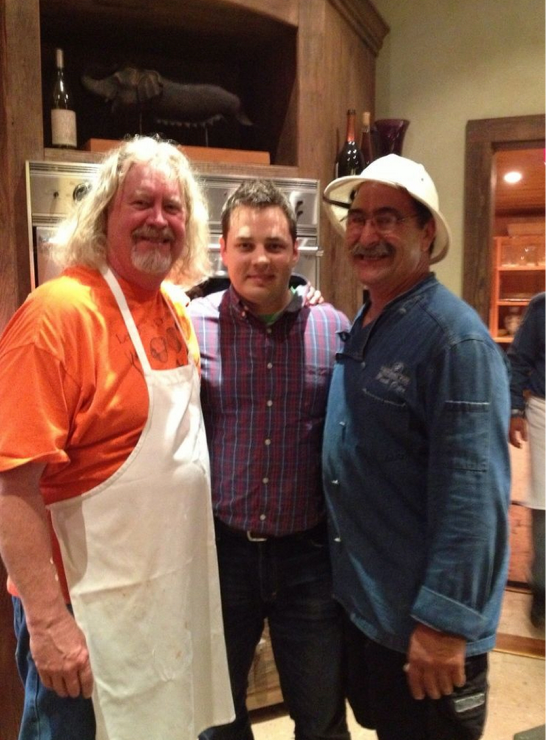 Once all of the guests had arrived, I several familiar faces except Christina. Jim said her son was ill and wasn’t able to attend. to this day, I don’t know if Jim was being honest or pulling on his pranks on me. Almost every one of the 30+ guests brought a magnum or double magnum of wine. Jim brought some magnums out of his cellar. As the night wore on, Jim proved to be an adept host, telling jokes and stories late into the evening. This was a night I will never forget and I wasn’t even on the guest list.
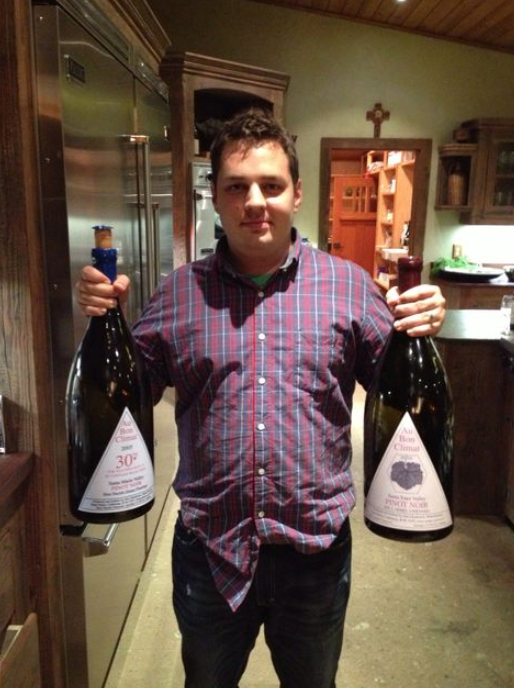 Chapter 8: Postscript Years later, I heard that when Jim spoke of me, he would say, “Oh yeah, great kid, very humble.” Many consider Jim the godfather of Santa Barbara wines. He was a mentor to numerous winemakers. The noted critic, Robert Parker, Jr., named Au Bon Climat one of the top ten wineries in the world in the 1990s. Yes, I was humble. Most people are humble in the presence of such brilliance. Not knowing what lies ahead for Au Bon Climat, I am going to cherish every sip of Au Bon Climat wine I can get my hands on as I reminisce about one of the best weeks of my career. Thank you for the memories, Jim. You will forever be “The Mind Behind.” Zack Eidson’s Metro Wines has been voted the #1 wine shop in Asheville for seven straight years, and has been mentioned in both the Wall Street Journal and Wine Enthusiast. Visit www.metrowinesasheville.com. Many are left with memorable experiences with Jim Clendenen and his wines, I leave you with this parting appropriate photo.

Wine BriefsRick Longoria Ends Career as Winery Owner I have had the pleasure of reviewing Rick’s Pinot Noir wines over the years and was never disappointed. He announced recently that he is selling his winery, tasting room in Lompoc, equipment, and inventory for almost $2 million. He has already sold his Fe Ciega Vineyard to The Ojai Vineyard. Rick founded Longoria Winery in 1982. Tim Matz New Director of Wine Education at Linfield University Tim Matz has been named Domaine Serene Chair in Wine Business and Director of the Evenstad Center for Wine Education at Linfield University. Matz has had more than three decades in the wine business internationally including executive leadership. Linfield has the only comprehensive wine program outside of the three programs located in California, and is the first university in the country to offer an interdisciplinary liberal arts degree in wine studies. The university also offers wine management and wine marketing certificates online, provides a summer wine industry immersion program, and hosts the annual International Pinot Noir Celebration each summer. The Latest Wine & Health News A report out of metro.co.uk suggested that drinking a glass of red wine in moderation can help prevent high blood pressure. Scientists assessed the effect of a flavonoid-rich diet on blood pressure by monitoring more than 900 adults in Germany. Three glasses of red wine per week seemed optimum for achieving the desired result on blood pressure, while 80 grams of berries a day was also found to be beneficial. In August, thedrinksbusiness.com reported a study by pharmacist Jacqueline Iversen who found that agonizing hangover symptoms are due primarily to inflammation rather than dehydration. She believes that the symptoms of alcohol hangovers can be prevented by disrupting the body’s inflammatory response with a combination of a non-steroid anti-inflammatory drug and an antihistamine. In her study in volunteers, this new treatment, named SPJ-001 by developer Sen-Jam Pharmaceutical, is safe and efficacious. However, dehydration most certainly plays a role in hangover symptoms and rehydration treatment is still considered advisable. In September, thedrinksbusiness.com reported a UK study that claims the consumption of alcohol-free wine has the same heart health benefits as drinking a moderate amount of the real thing. The research involved nearly 450,000 people as part of the UK Biobank project. The participants’ lifestyle choices and health were tracked over seven years. Participants who drank a moderate amount of wine had a 40% reduced risk of coronary heart disease compared to the group average. But, moderate consumption of beer, cider, or spirits increased the risk by 10%. The researchers believe that the benefits of red wine are due to polyphenols rather than alcohol. There have been multiple studies reported over the past few years on the relationship between alcohol and atrial fibrillation (AFib). Some research indicates an increased risk of AFib with even moderate amounts of wine drinking, while other research shows no significant relationship. Scientists believe the specific relationship between drinking alcohol and AFib is difficult to determine because alcohol is so commonly consumed. As reported in www.studyfinds.org, Dr. Gregory Marcus, a professor of medicine in the Division of Cardiology at UC San Francisco, found that even one alcoholic drink may be enough to increase the risk of AFib. He studied 100 patients with intermittent (paroxysmal) AFib who consumed at least one drink per month and typically consumed one drink each day on average during the study period. At 1 month, researchers compared the number of AFib events and whether or not the episodes were preceded by alcohol use. Of the 56 participants in the study who had an episode of AFib, it was twice as likely that they had had alcohol in the four hours before the episode. The more alcohol a participant drank, the greater the risk of quickly experiencing AFib. The authors of the study point out that confounding that may accompany alcohol consumption could not be excluded, and the findings may not apply to the general population. This peer-reviewed study was published in the Annals of Internal Medicine. The jamanetwork.com reported a cohort study of 11,737,467 participants to determine whether the frequency of drinking alcohol or the quantity of alcohol consumed per occasion was the most important risk factor for developing gastrointestinal (GI) cancer. This study suggests that frequent drinking may be a more important risk factor for GI cancers than the amount of alcohol consumed per occasion. There is very little information on the mechanism by which the frequency of drinking is an important determinant of cancer risk. It should be noted that this study was done on Koreans and the results may not apply results to other ethnic groups. The Woes of COVID and 2020 Wildfires on Oregon Wine Industry On September 8, 2021, the Oregon Wine Board released its 2020 Vineyard and Winery Report. The estimated value of wine grape production decreased 34% or by nearly $80 million to about $159 million in 2020. Yield per acre decreased by 24% due to cooler late spring weather reducing cluster sizes and weights. Total grape production was down 29% as yields and wildfires resulted in 30,000 fewer tons harvested than the prior year. Pinot Noir production plummeted statewide except in the Rogue Valley and the Columbia River regions. Pinot Noir production in the Willamette Valley fell over 41% in 2020. COVID led to labor shortages as workers either became ill or avoided working altogether, tasting rooms were shuttered for extended periods and there were increased costs to wineries of investing in health and safety measures. There were some bright spots in the report as well. There are now 995 wineries in the state, an increase of 10% over 2019. The number of vineyards increased from 1,297 in 2019 to 1,370 in 2020. Total planted acreage increased by 6% to 39,531. Pinot Noir remained Oregon’s leading variety, accounting for 59% of planted acreage and 49% of wine grape production. Oregon wine sales to national distributors increased by 3.5%. International sales increased by 24%. Oregon’s direct-to-consumer shipments increased 31%. The complete report is available at industry.oregonwine.org. My advice is to stock up on the outstanding Pinot Noir wines from Oregon’s 2018 and 2019 vintages as Oregon’s heat dome in 2021 will also most certainly limit production. Syndicate Wine, LLC Pairs with Comic Book Publisher Syndicate announced that five custom Oregon wines will be released with labels featuring exclusive artwork of Oregon comic book publisher TidalWave Productions. The first four wines were offered to the general public on September 9, 2021, at Syndicate Wine Bar in Beaverton, and include a 2019 Willamette Valley Chardonnay, a 2020 Willamette Valley Pinot Gris, a 2017 Walla Walla Valley Syrah and a 2020 Willamette Valley Pinot Noir Rosé. Tidal Wave publisher Darren G. Davis is excited to bring his two favorite hobbies together and help another Oregon-based company during these challenging times. Founded in 2019, Syndicate Wine, LLC is an Oregon Benefit Company with an established wine bar and retail space in Beaverton and a new location in Newberg in 2021. The company supports the wine industry through a holistic approach to community, supporting small and craft producers through private label partnerships, providing an inclusive work environment and dining space, and encouraging education and appreciation of wine culture for all. For more information, visit www.tidalwavecomics.com or email sales@syndicatewines.com.
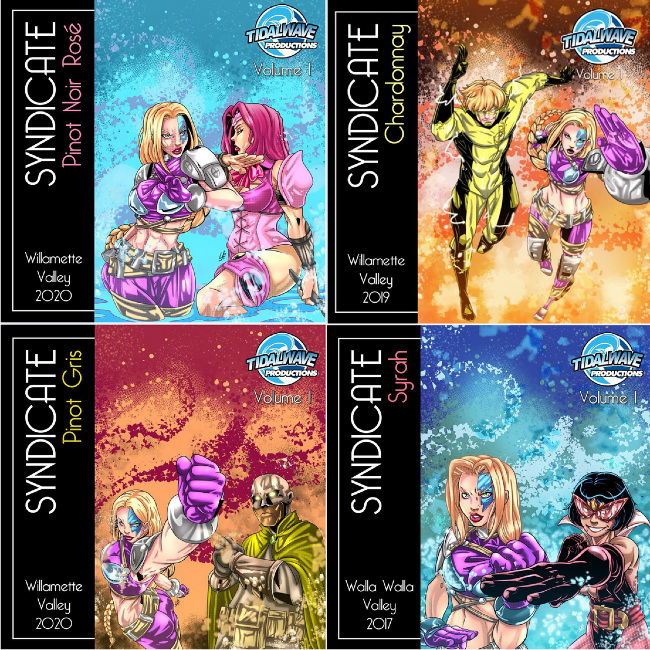 Hispanic Heritage Month Oregon’s Hispanic wineries unite for the second annual “Celebrating Hispanic Roots” event in honor of Hispanic Heritage Month from September 15-October 15, 2021. Six wineries with Hispanic owners and winemakers will unite to celebrate their common Hispanic roots, the unique journeys that brought them to Oregon, the vineyards they manage, the premier wines they produce, and their ambitions to give back to the Spanish-speaking community in Oregon. The months will conclude with an in-person wine tasting event to be held at Beacon Hill Winery & vineyard on Sunday, October 3. the tasting will benefit local nonprofit, Adelante Mujeres. Wine packages that commemorate the event will also be available exclusively from September 15-October 15. The six participating wineries are Alumbra Cellars, Atticus Wine, Beacon Hill Winery & Vineyard, Cramoisi Vineyard, PARRA Wine Co., and Valcan Cellars. Visit the individual winery websites to view the special wine packages available. Visit www.celebratinghispanicroots.com for updates and information.
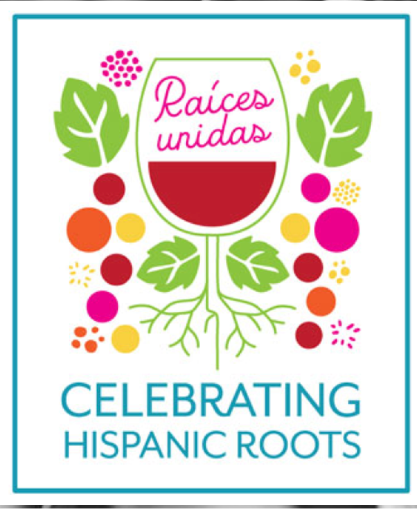 Red Wine is NOT a Fattening Beverage I always thought it was humorous that producers promoted low-alcohol wine as low-calorie drinks that would not cause weight gain. This approach was particularly appealing to women. Science has shown that although calories in wine come from alcohol, red wines are an excellent source of polyphenols that counteract the calories by burning them. Lamuela-Raventos reported her research to the Wine Spectator that indicated wine can help burn extra calories. The results of the PREDIMEI trial disproved the notion that wine has empty calories. She points out that when we drink red wine in moderation with meals, one is not adding more weight or abdominal fat. Polyphenols appear to be responsible for this weight-control action. Since red wine is the key, why would you drink anything else than Pinot Noir since it has among the highest levels of polyphenols of all red grapes? One glass of white wine has only 40 mg of polyphenols compared to one glass of red wine which has 200 mg, primarily due to the anthocyanins present in the skin of red grapes. WesMar Winery’s Last Vintage Denise Selyem and Kirk Hubbard have spent 33 years together and 22 years operating WesMar (“Wesmare”) Winery. The 2019 vintage wines currently on release will be the 20th and last vintage. They have sold their home and vineyard in Sebastopol and the new owners plan to continue to develop and improve the property. Denise and Kirk plan to devote their future time to sailing and no longer have a winery. They had toiled as garagistes in a 1,500-foot space in Sebastopol. I have been on board with the excellent WesMar Pinot Noir wines since 2002 and I have reviewed most of their releases up until the 2016 vintage. With the closure of Brogan Cellars and now WesMar Winery, the only vestige of the original Williams Selyem winery is Woodenhead Vintners, whose owner and winemaker Nikolai Stez spent considerable time working side-by-side with Burt Williams and continues to ply his trade, vinifying Pinot Noir in the traditional Williams Selyem way. Like Williams Selyem, WesMar never changed their label. Visit www.wesmarwinery.com to order the last 2019 vintage Pinot Noir wines. 2019 vintage magnums and library 3-liter bottles are available.
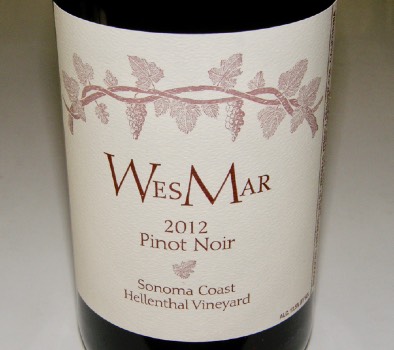 9/11 and Windows on the World As the nation commemorates the twentieth anniversary of the attack on the World Trade Center, I would highly recommend the book, “The Most Spectacular Restaurant in the World: The Twin Towers, Windows on the World and the Rebirth of New York.” Journalist Tom Roston tells the complete story of the Windows on the World restaurant from its opening to 9/11 and its tragic end. Published in 2019 with illustrations, this well-researched book reveals the story of an iconic restaurant whose history had not been told now. Even more enjoyable with a glass of Pinot.
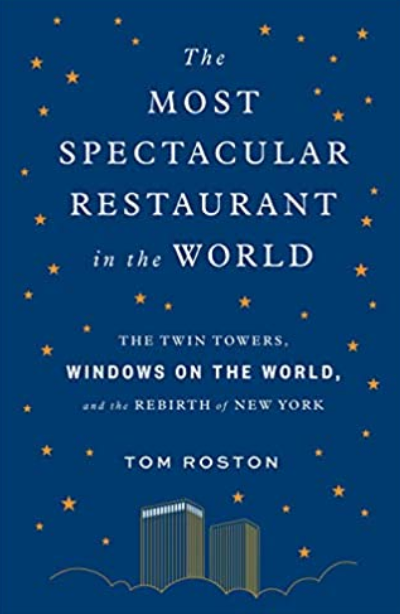 Bill Fuller Crafts 46th Vintage in Oregon The 2019 Willamette Valley Vineyards Tualatin Estate Vineyard Pinot Noir and Chardonnay represents Bill Fuller’s 46th vintage in Oregon. The wines are crafted by 84-year-old Bill from his favorite blocks at Tualatin Estate Vineyard using his traditional techniques and reflecting the inherent quality of the vineyard he founded in 1973. Like many Oregon wine pioneers, he moved from California in 1973 to plant the Tualatin Vineyard and become one of Oregon’s original winemakers. Bill had already worked in the lab at Italian Swiss Colony, obtained an MS in enology at UC Davis, and had been the winemaker at Louis Martini Winery for nine years when he began evaluating vineyard sites for an investment banker in Oregon. They became partners in a 65-acre site northwest of Forest Grove in 1972, which they named Tualatin Vineyards after the Tualatin River that flows near Forest Grove on its way to the confluence with the Willamette River. In 1997, Willamette Valley Vineyards merged with Tualatin Estate Vineyard and Bill retired. Sixteen years later, Winery Director Christine Clair asked if Bill would come out of retirement and assist in the crafting of the wines produced from Tualatin Estate fruit. Watch David Adelsheim’s full-length interview through the Oregon Wine History Archive at www.oregonwinehistoryarchive.org. The 2019 vintage Tualatin Estate Pinot Noir ($60) may be purchased at www.wvv.com.
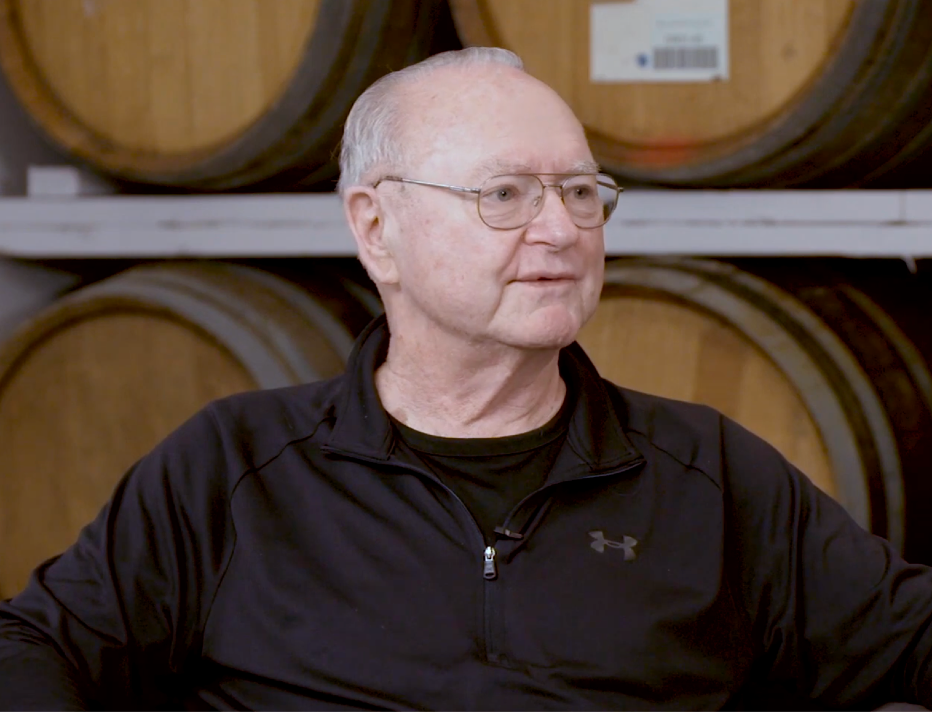
The Ten Commandments of Pinot Devotees
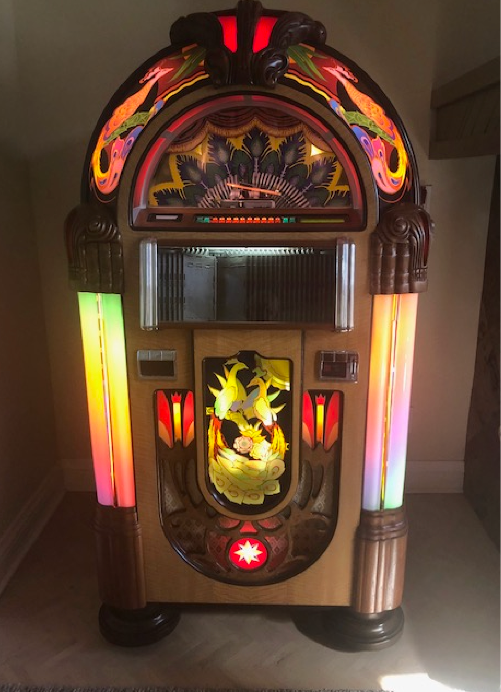 Through the years, I am sure readers have learned more about me personally. Maybe you don’t know that I have been enthralled with Corvettes since the late 1950s while in high school. I bought my first one (and my first car), a brand new red 1969 Stingray, 427 cu/390 hp, upon graduating from medical school and have owned a Corvette continuously ever since. It is not an ideal car for wine country visits, so often I have had to rent a car for travel especially in winter. Another of my passions is the 1950s and 1960s rock and roll and in particular doo-wop music. I have owned several jukeboxes through the years and possess an extensive collection of well-preserved vinyl LPs from that era. With that in mind, I offer “The Ten Commandments of Pinot Devotees.” My apologies to Harvey (Fuqua) and the Moonglows who first sang “The Ten Commandments of Love” in the 1950s.
Stand by Pinot Noir all the while Take happiness with the heartaches Go through your cellar wearing a smile. Thou shall always honor Pinot Noir for everything it gives and does Love it with all your heart and soul Come to Pinot Noir when you are lonely Savor it when the time is right Treat it sweet and gentle And always know that Pinot Noir is right |
